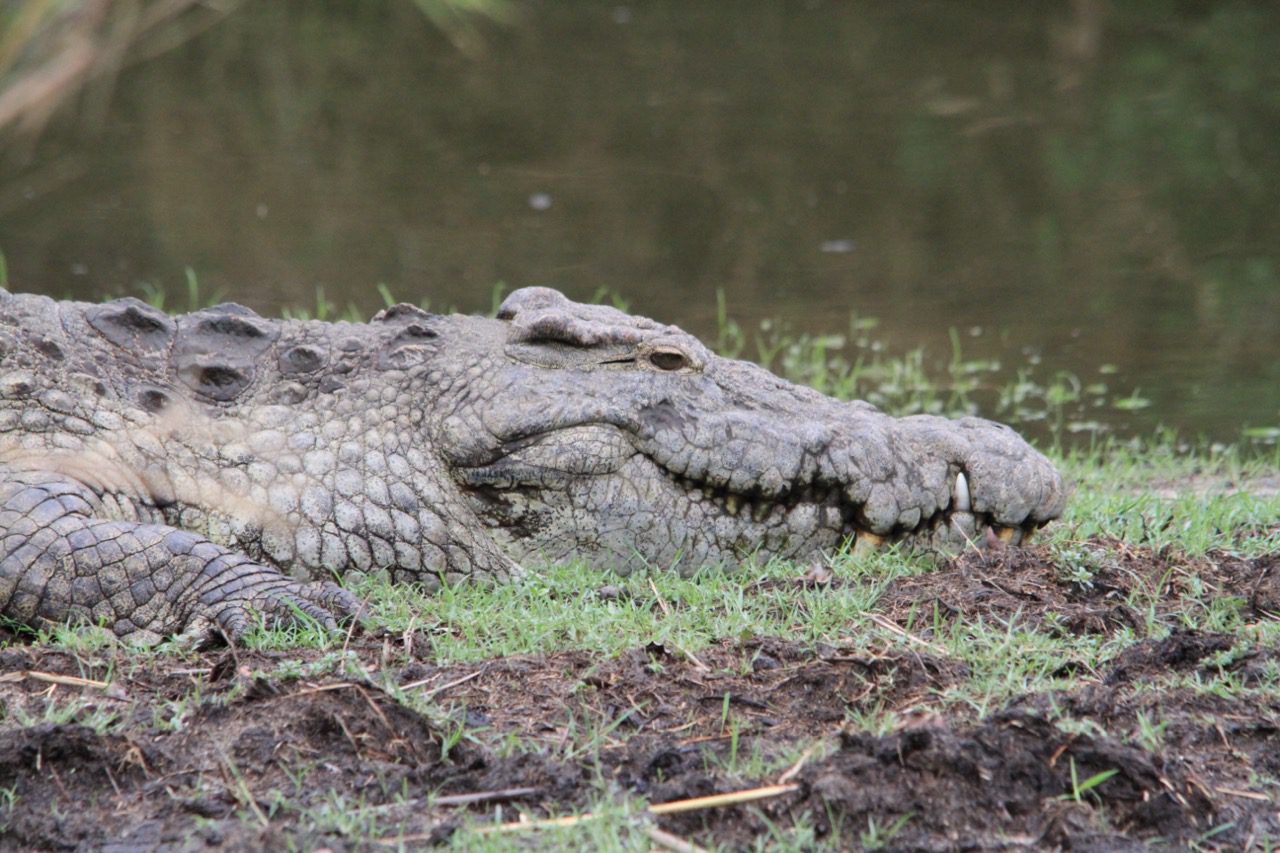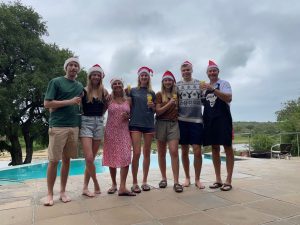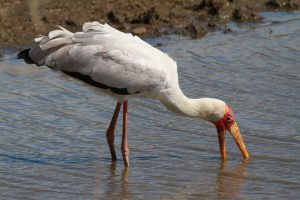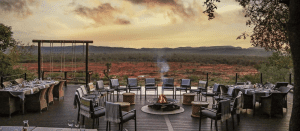🙂 One of the most beautiful and peaceful hides in the park with a stunning biodiversity of birdlife.
🙁 You sometimes feel intimidated by the big camera lenses (even though we have them ourselves!)
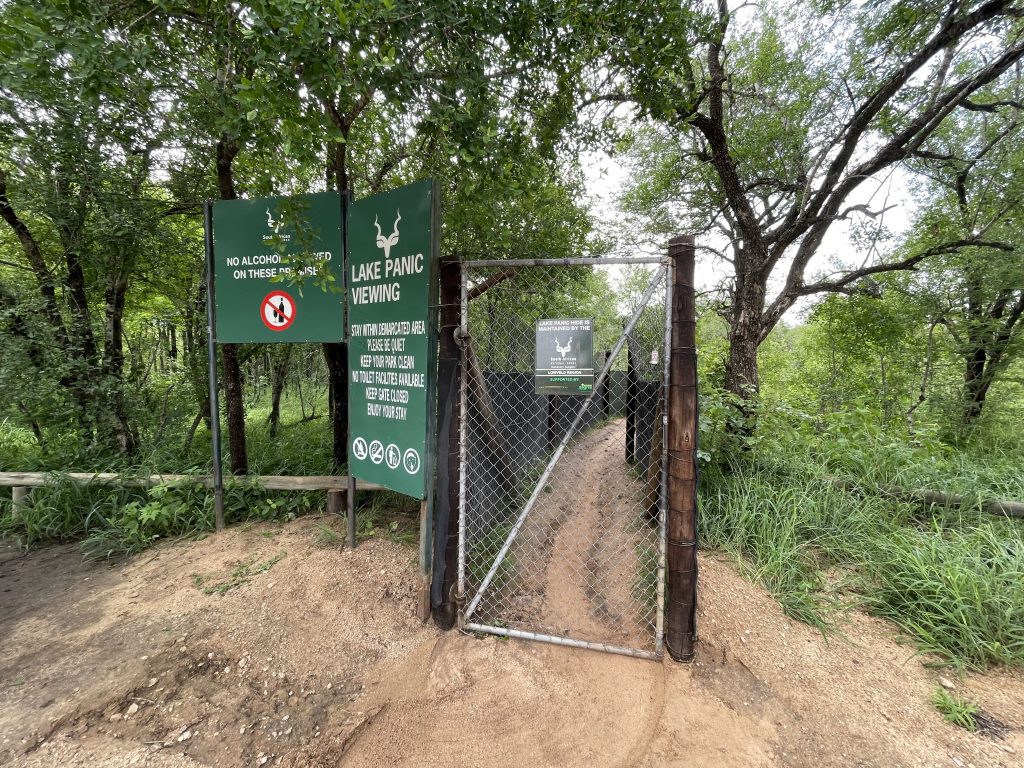
My Oupa Jacobs has a little plaque here in memory of him and his love for the Park.
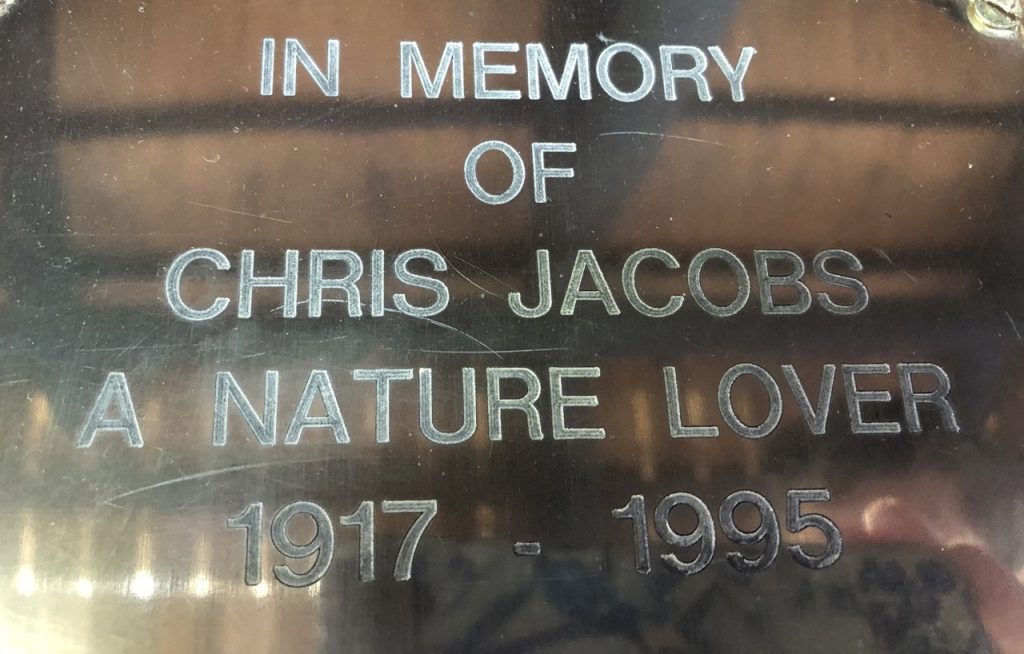
The presence of crocodiles, hippos, monitor lizards, terrapins and various insects, such as gorgeous dragonflies on the water lilies in front of the hide, makes Lake Panic one of the most scenic and productive spots in all of Kruger. The hide is ideal for photography and large mammals are seen at all times of the day. Sadly an incident occurred when a young man was diving into Lake Panic to retrieve golf balls and was taken by a 3.9m crocodile … h e was the son of a Ranger who had unfortunately been drinking while playing golf. The crocodile was shot – it still had his body in its mouth. Tragic.
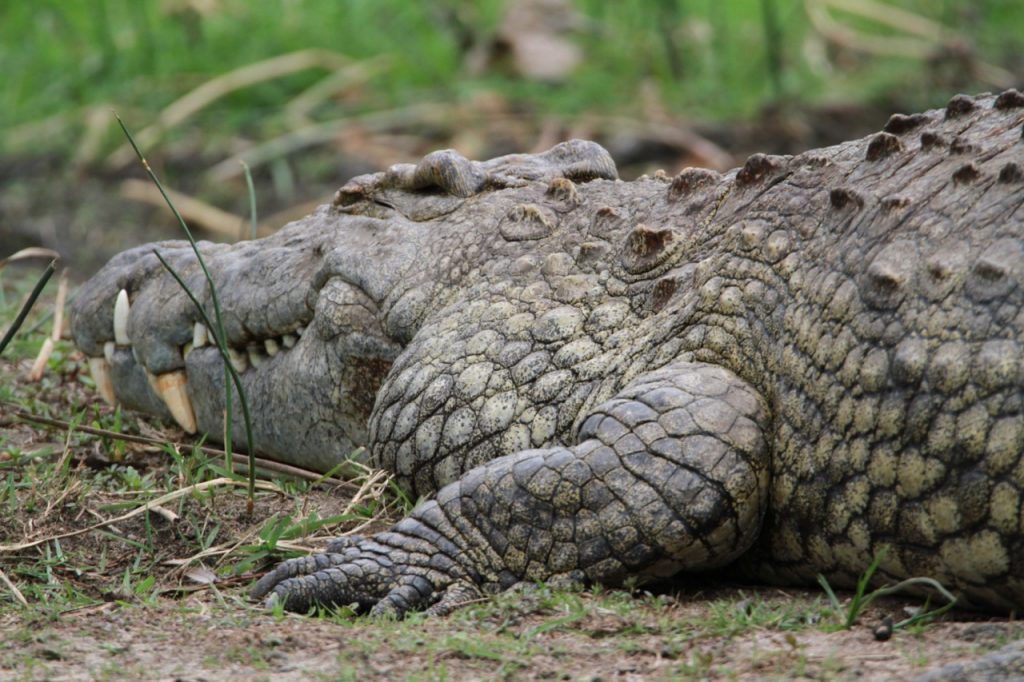
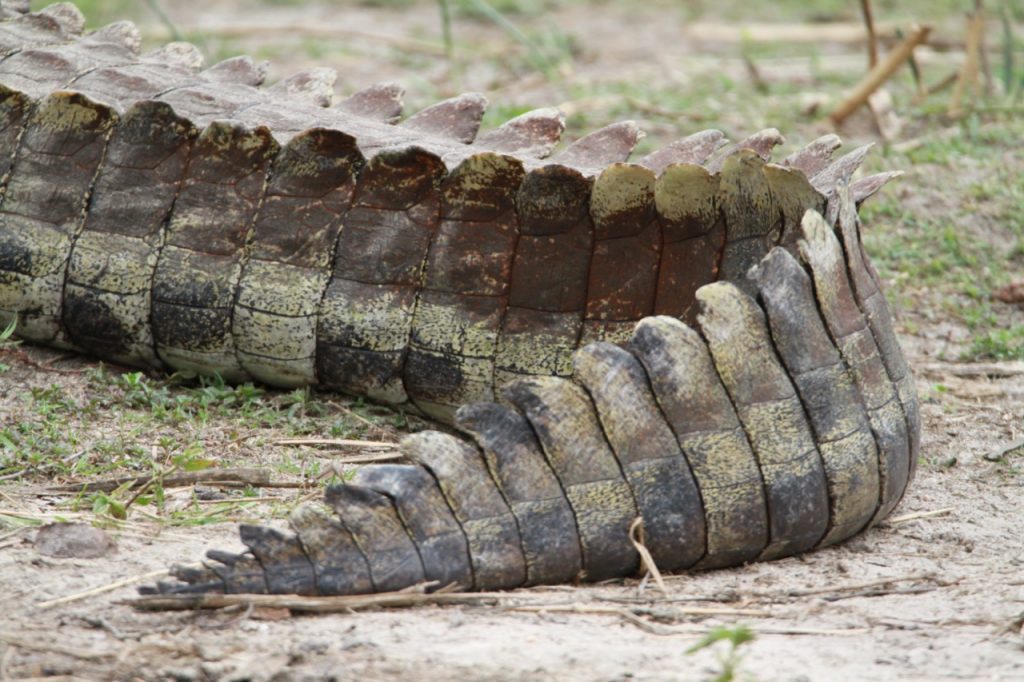
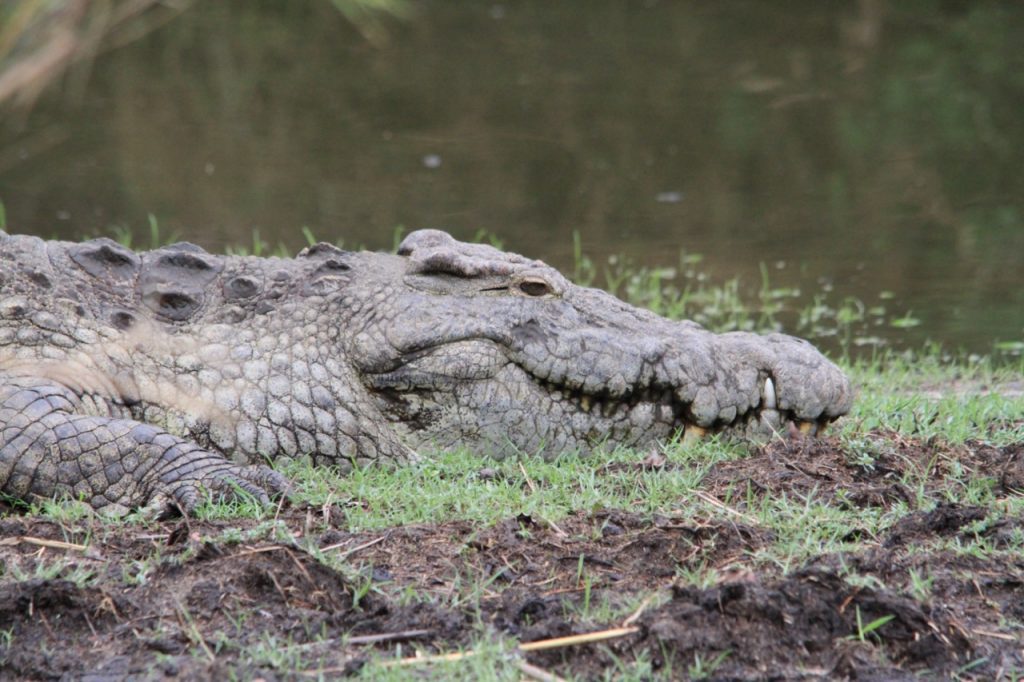
The sound of the fish eagle opitimises Africa…
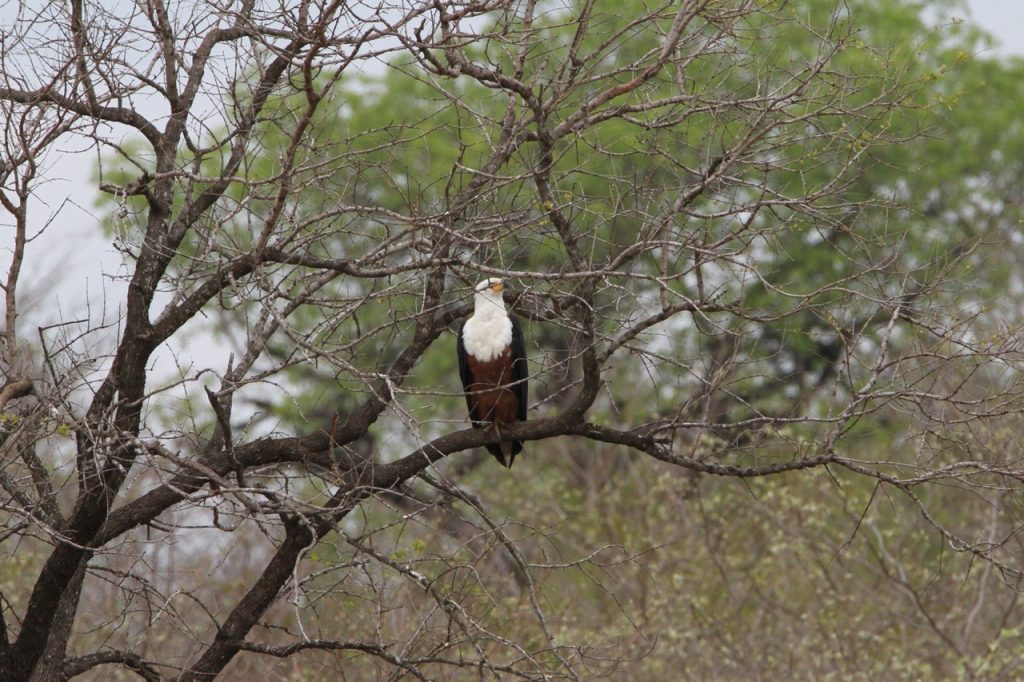

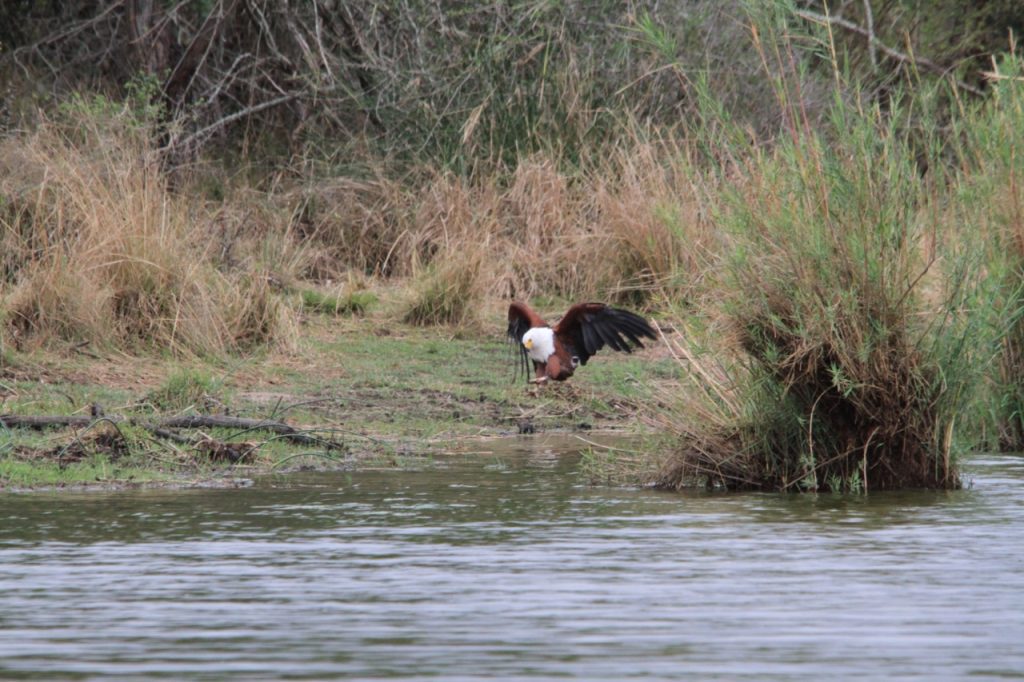
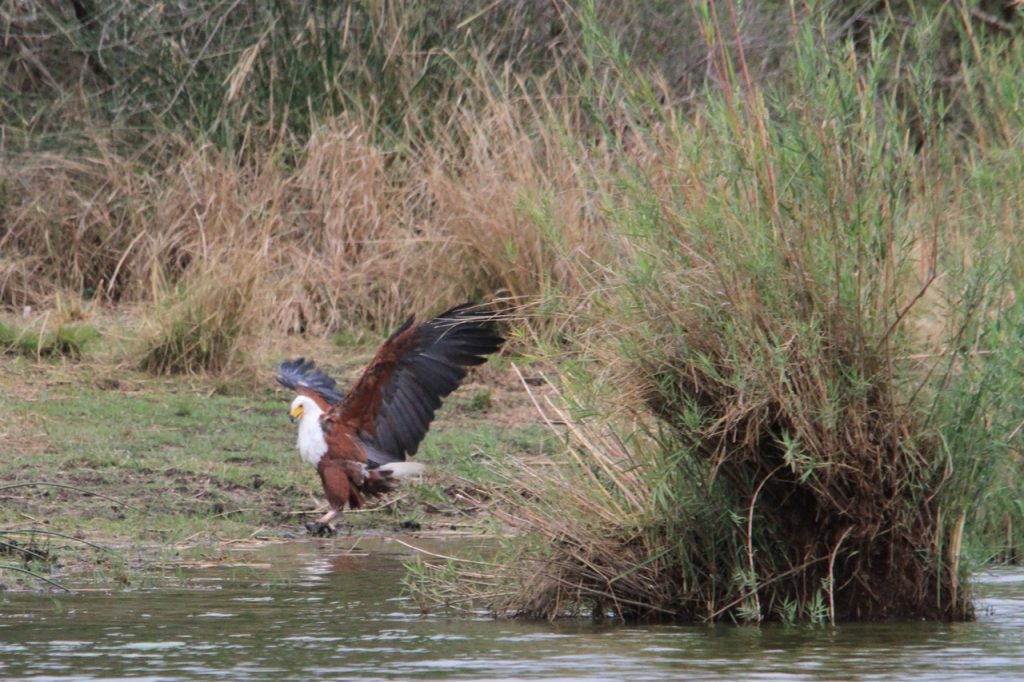
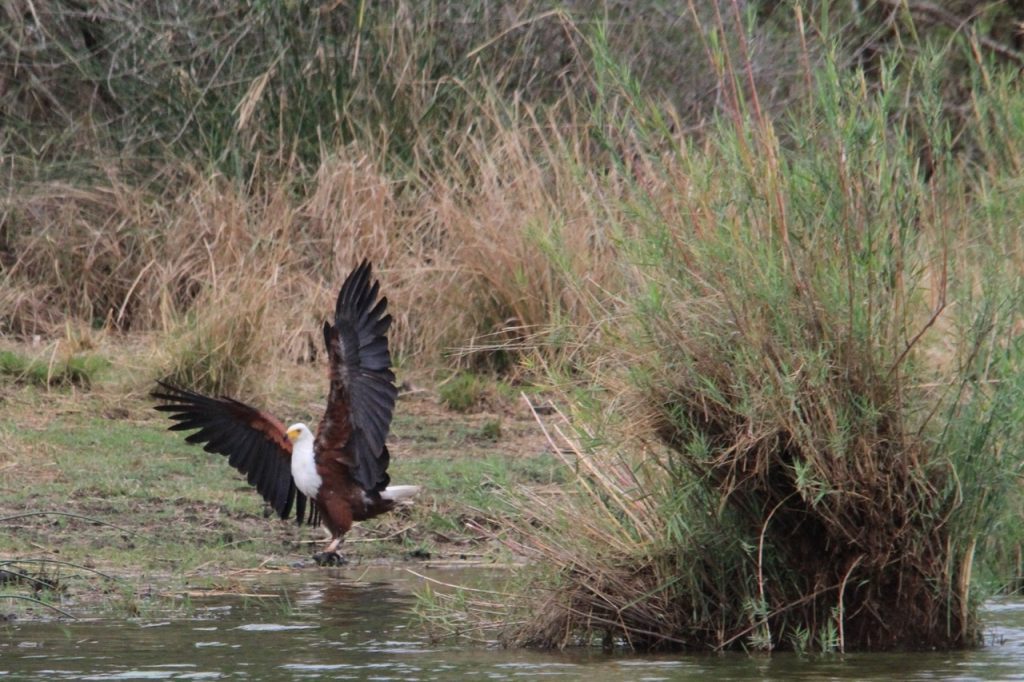
For me, the non-stop comings and goings of southern masked-weavers provided the most memorable birding. Their nests, suspended over the water, were being woven seemingly at an arm’s length from the hide. No need even for a big zoom lens!
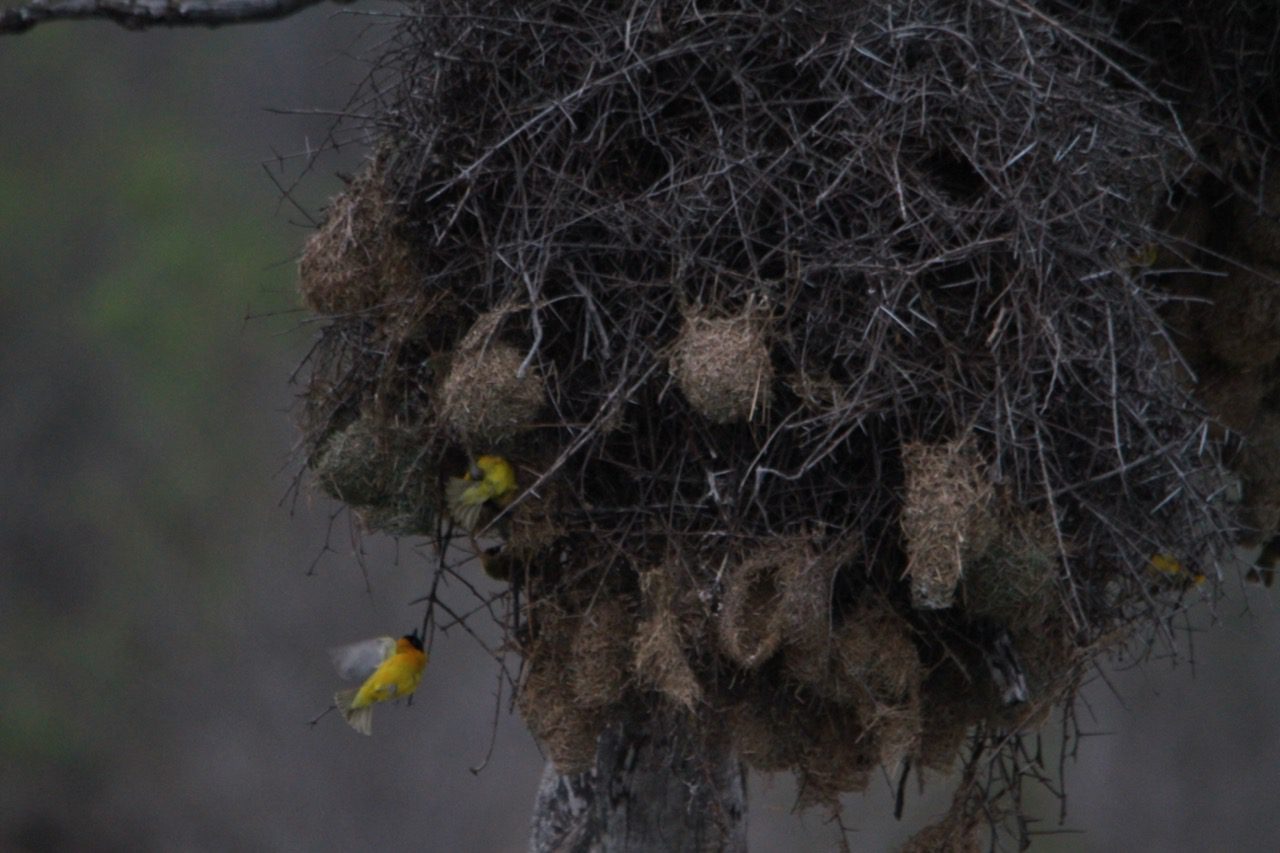
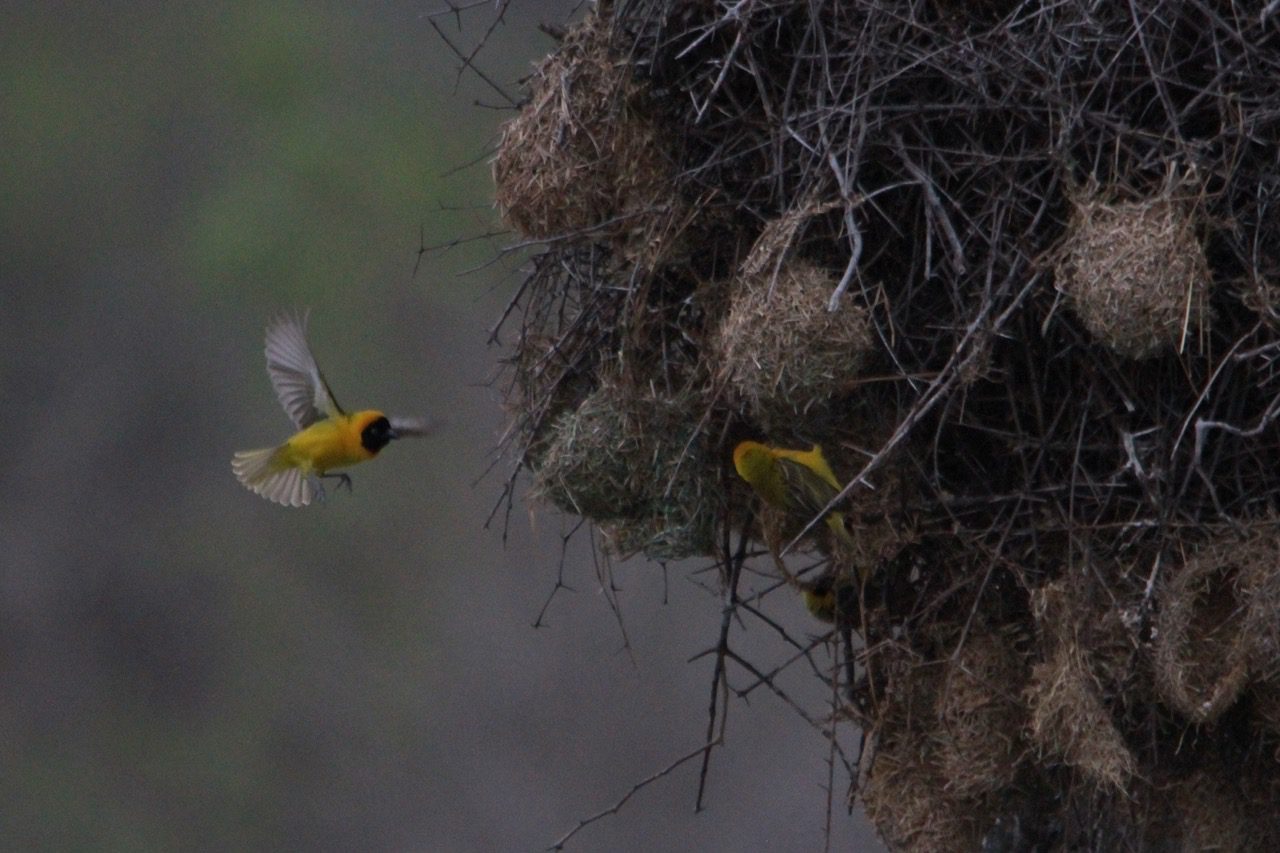
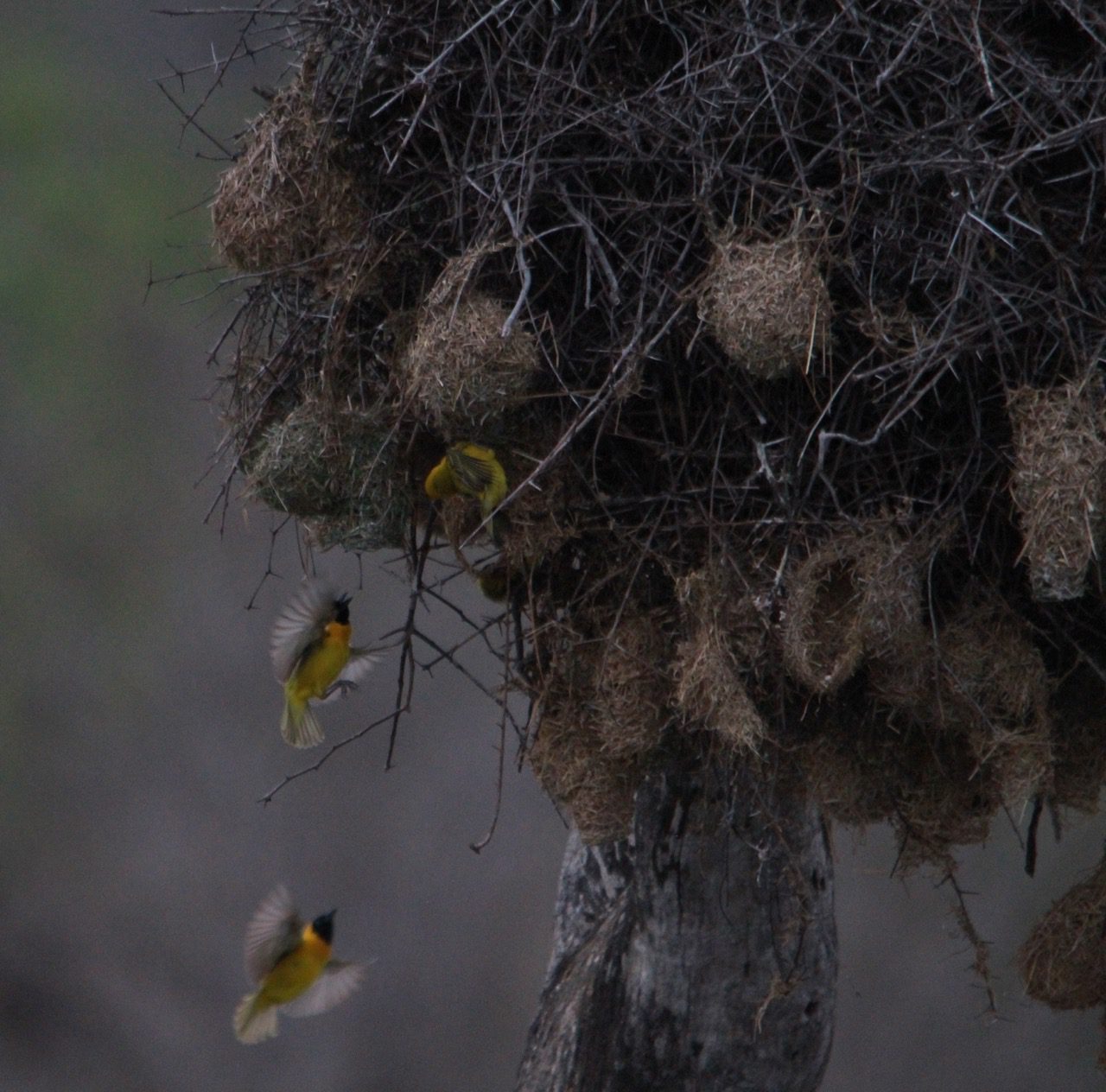
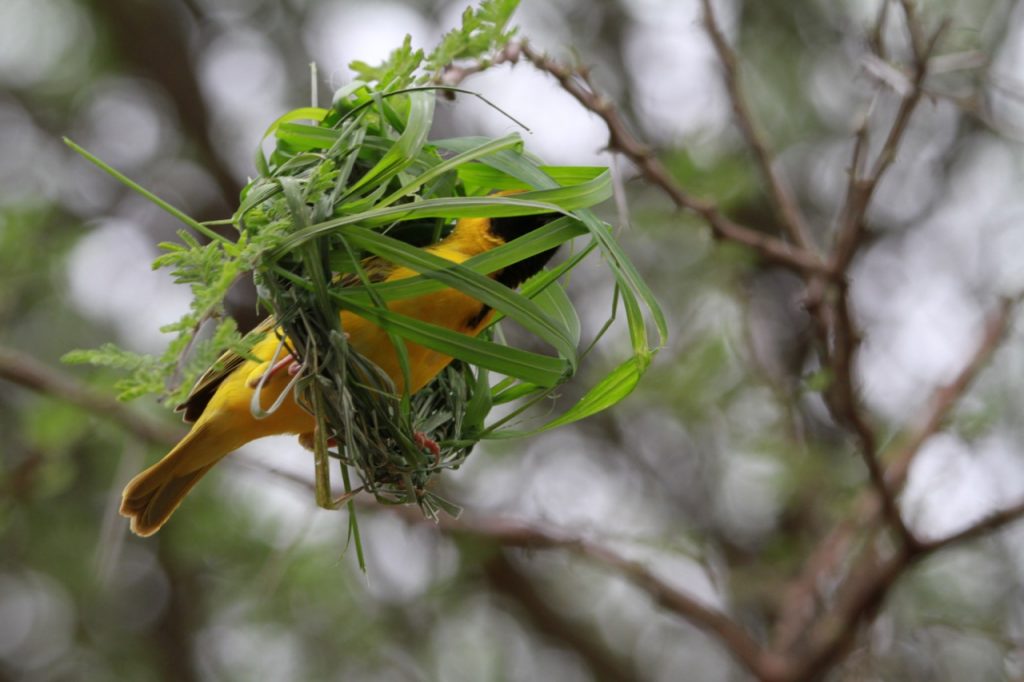
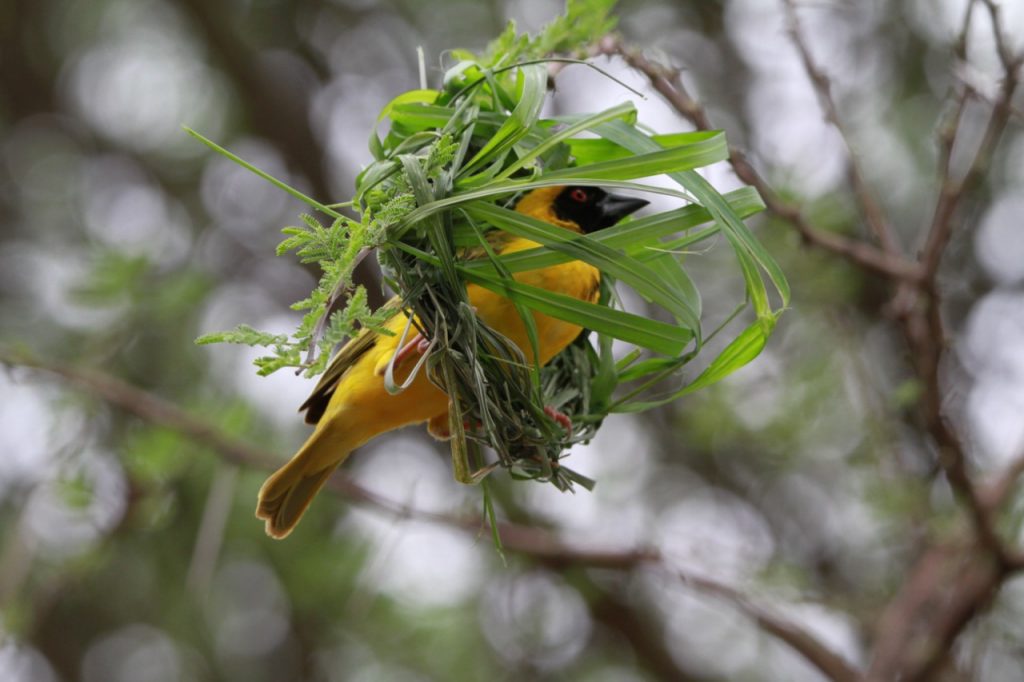
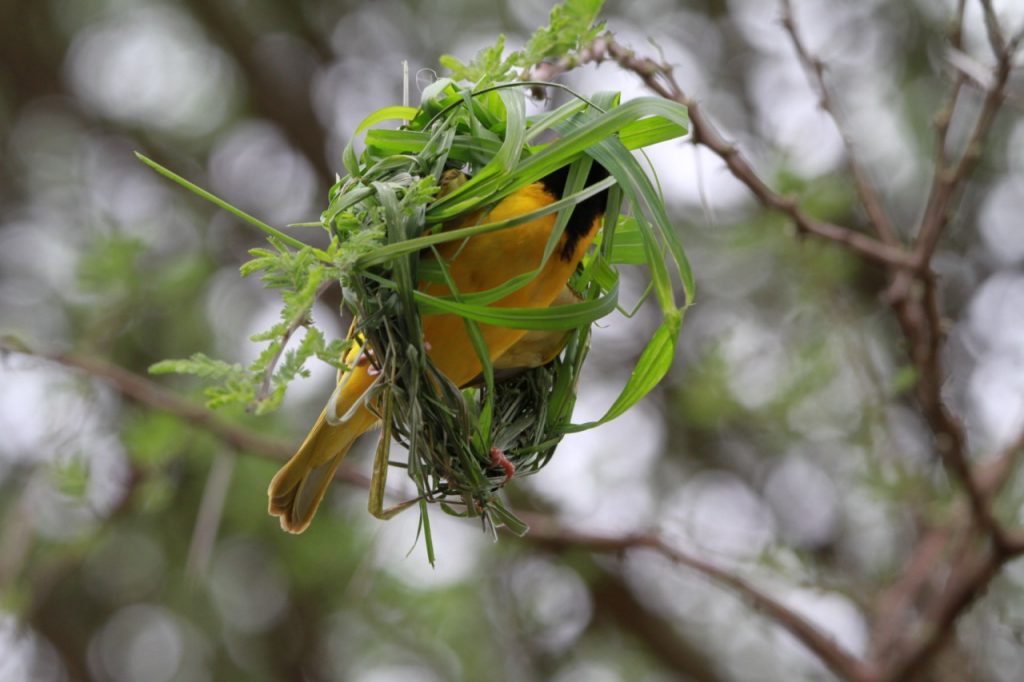
Kingfishers abound at Lake Panic in summer, particularly the pied, woodland, and malachite species, as well as giant and brown-hooded varieties. White-fronted bee-eaters hunt along the water, while black crake and African jacana stalk the lily pads. In the reed-beds, look for African rail, one of the few places in Kruger where it has been seen.
On the fringes or in the reeds, check out larger birds such as African darter, purple and green-backed herons, along with black-crowned night-heron. Heavyweights such as African openbill stork, tawny eagle and African fish eagle can be seen. Lake Panic also turns up sightings of osprey.
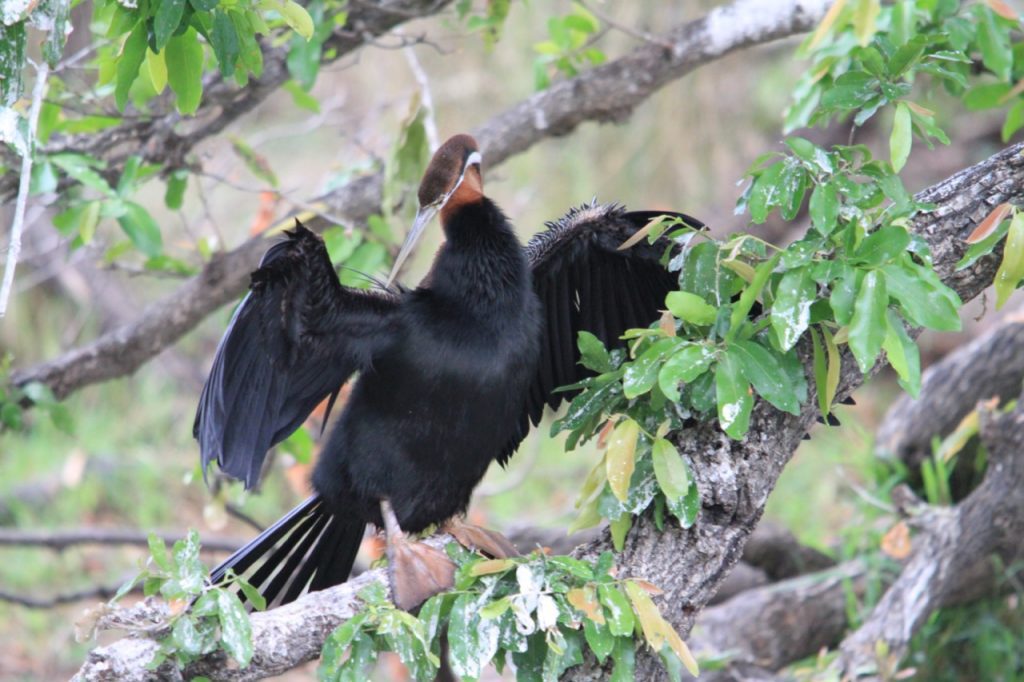
The Goliath Heron is a striking waterbird!
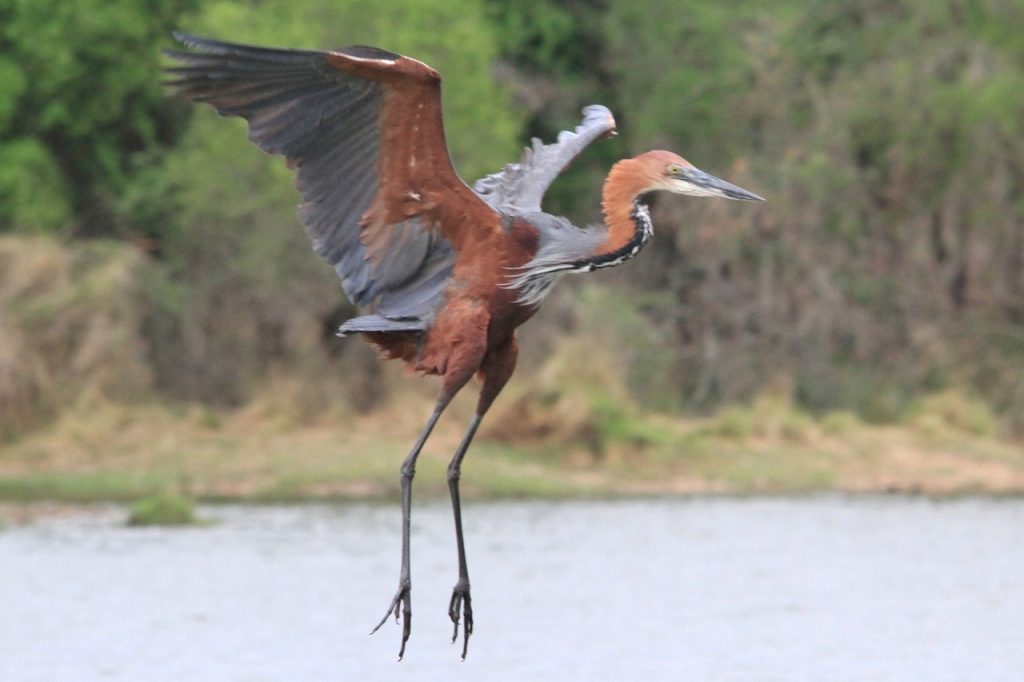
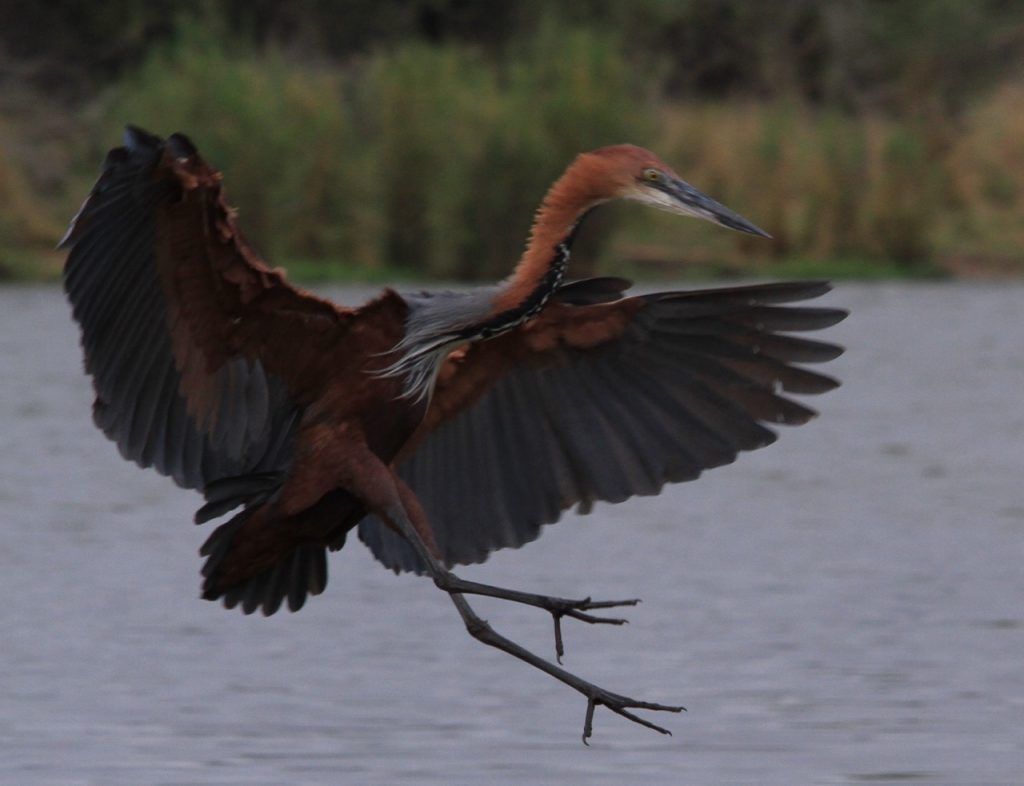
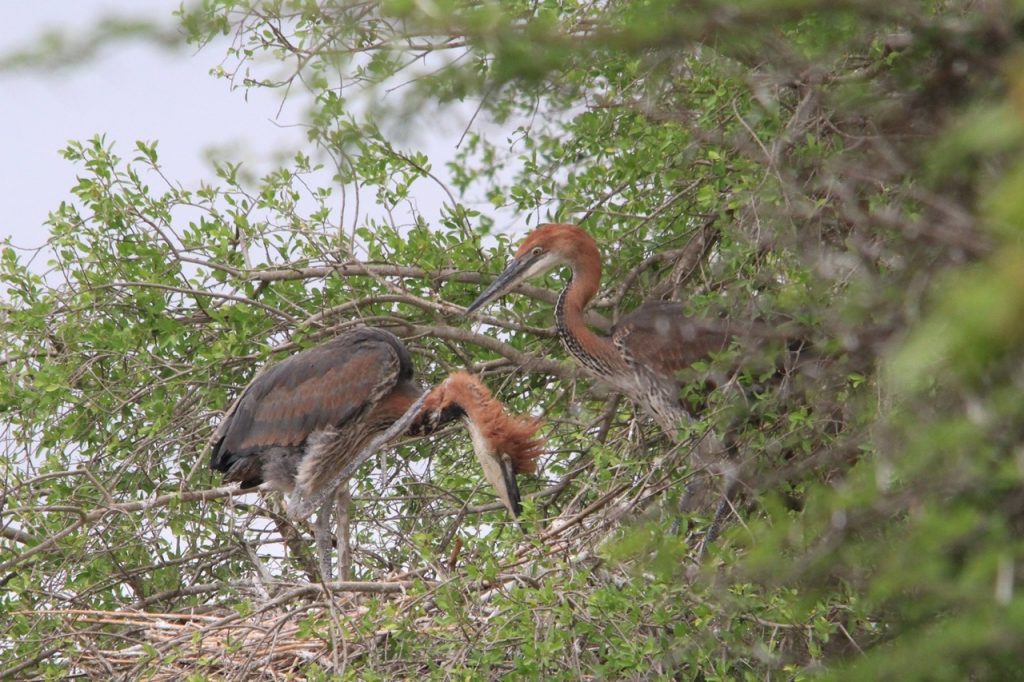
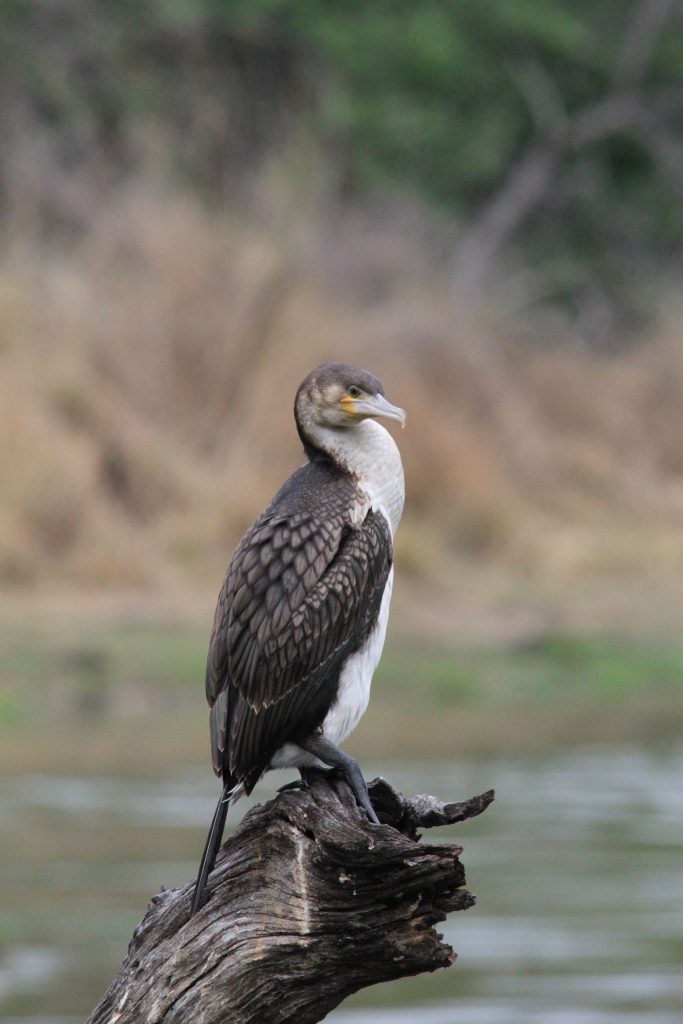
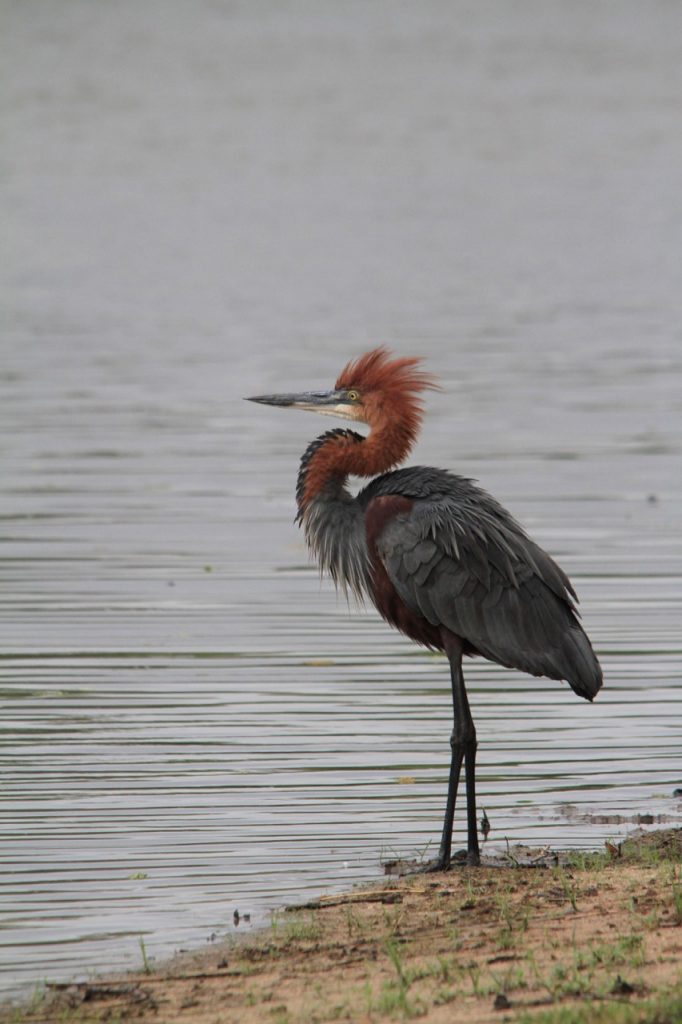
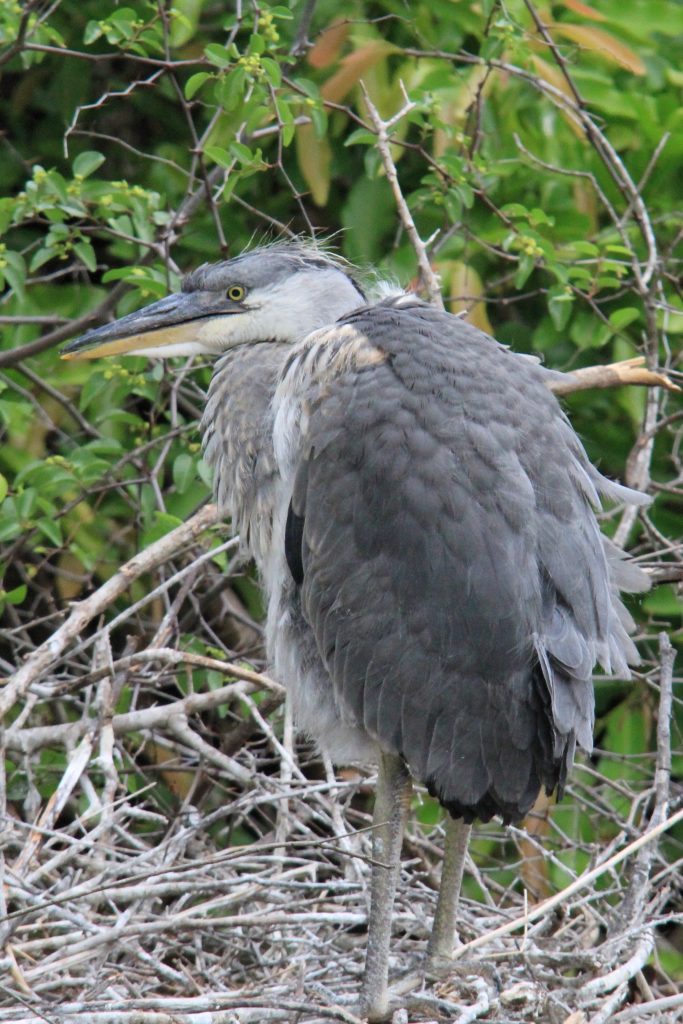
The striated or green-backed heron, only 40 cm in length, with piercing yellow eyes, legs and feet, is one of southern Africa’s smallest herons. It is resident along rivers that have a fringe of trees or reeds along their banks. Visitors to Kruger will encounter it at most low-level bridges. Prey is mainly small fish, but they also take aquatic insects, frogs and even small birds. Birding guru Warwick Tarboton recounts that unlike other herons, their technique of fishing involves placing ‘floating bait’ in the water and then ambushing any fish that comes to take it. Bait is usually a small insect or spider. On the edges of streams the birds drop the bait into the water, then move downstream and wait at the ready for it to come past. If the bait fails initially, it may be retrieved and dropped again or taken to another position and the exercise repeated.
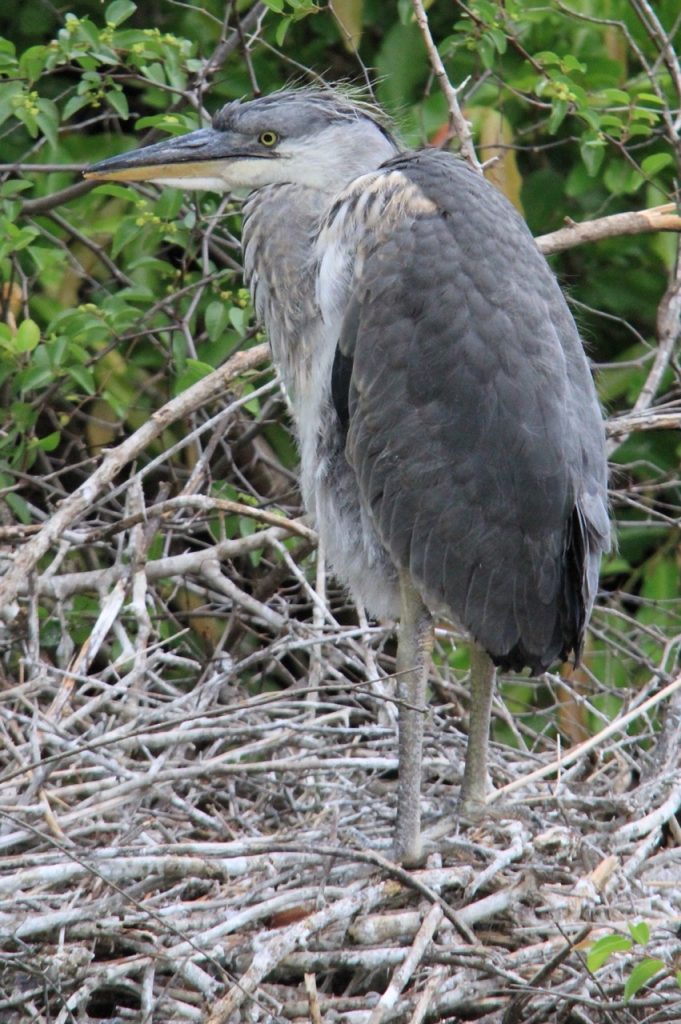
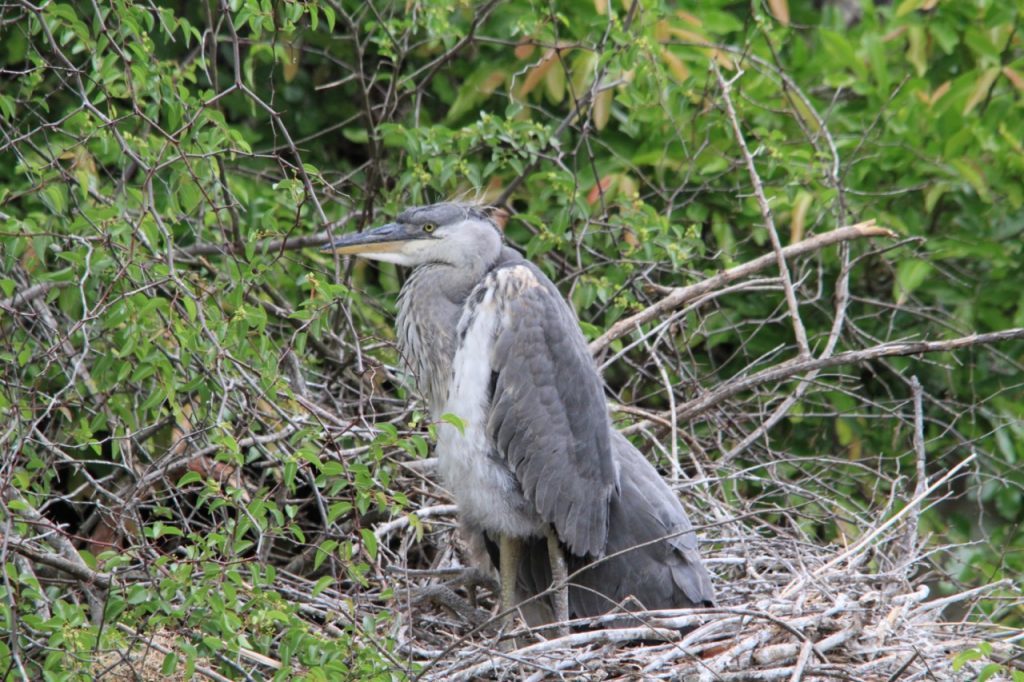

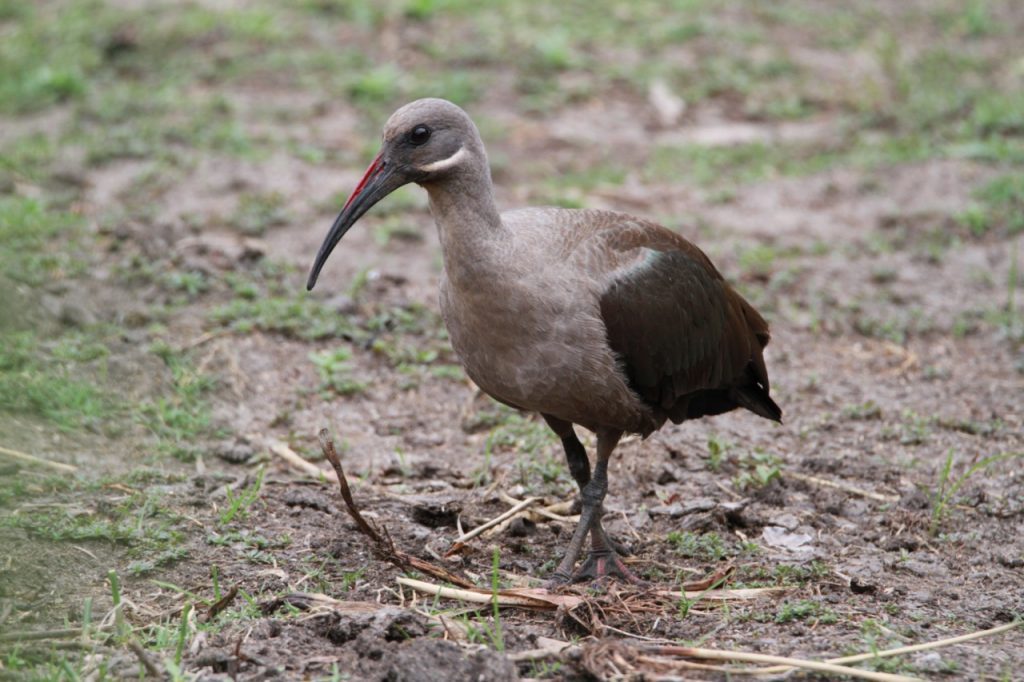
2019:
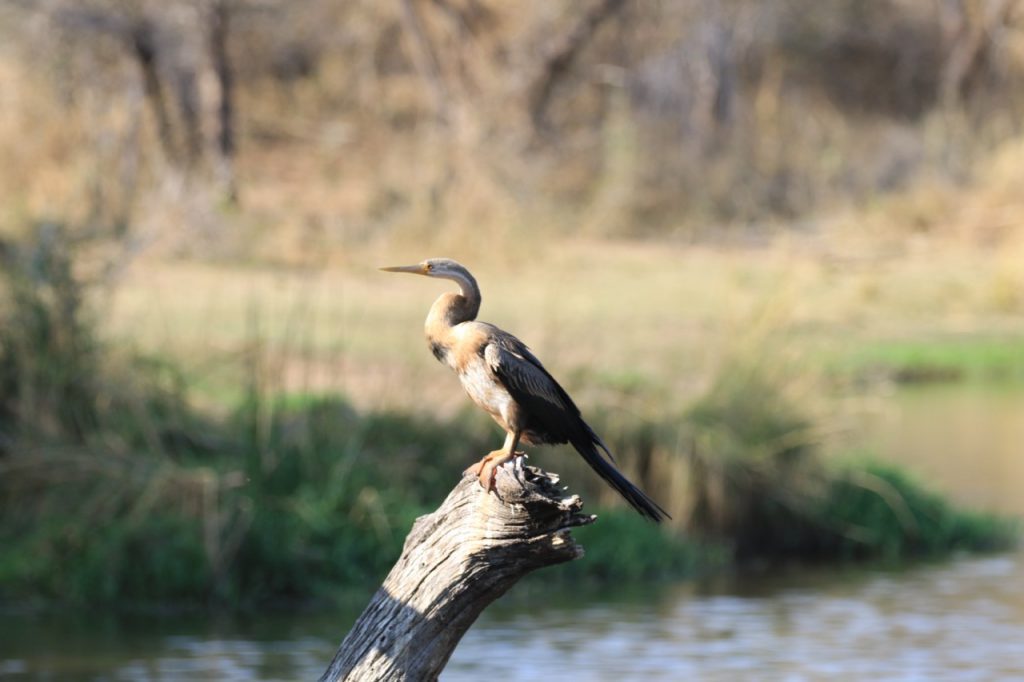
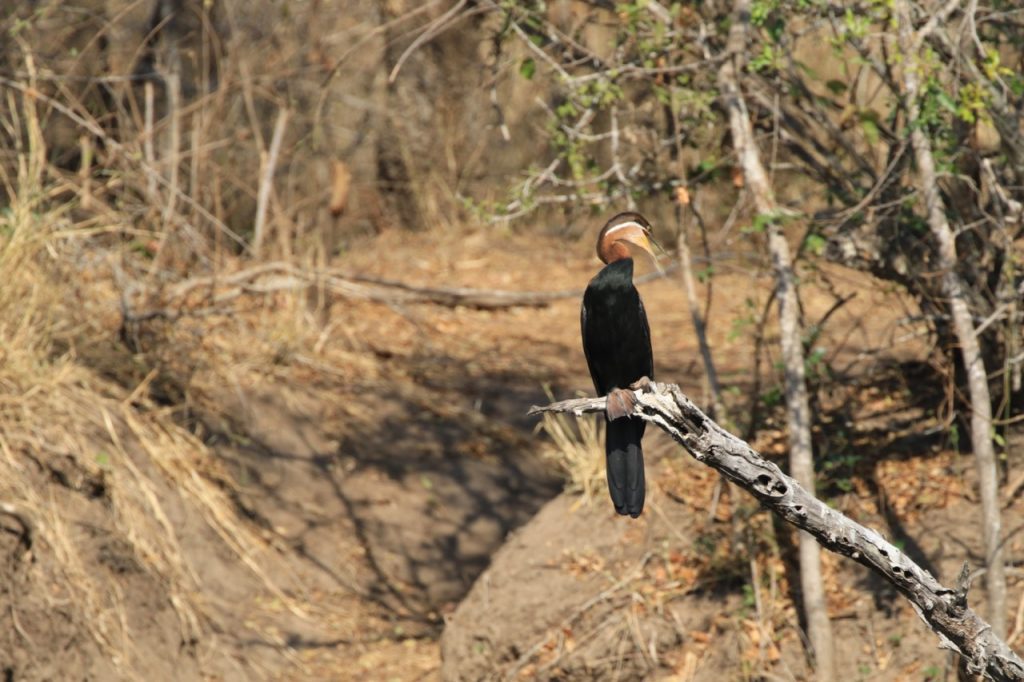
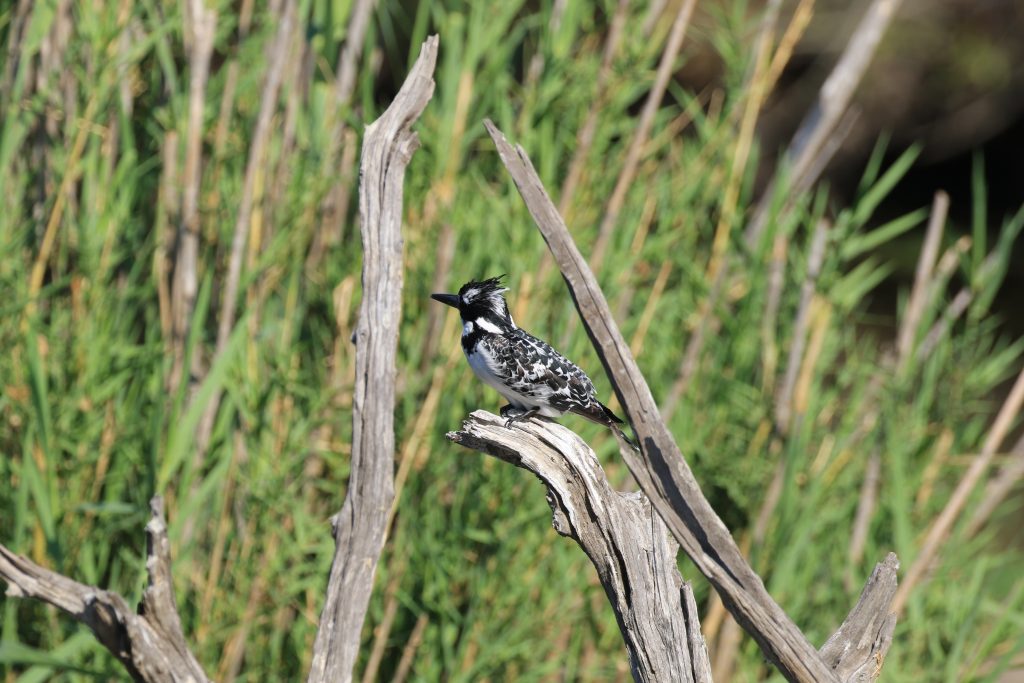
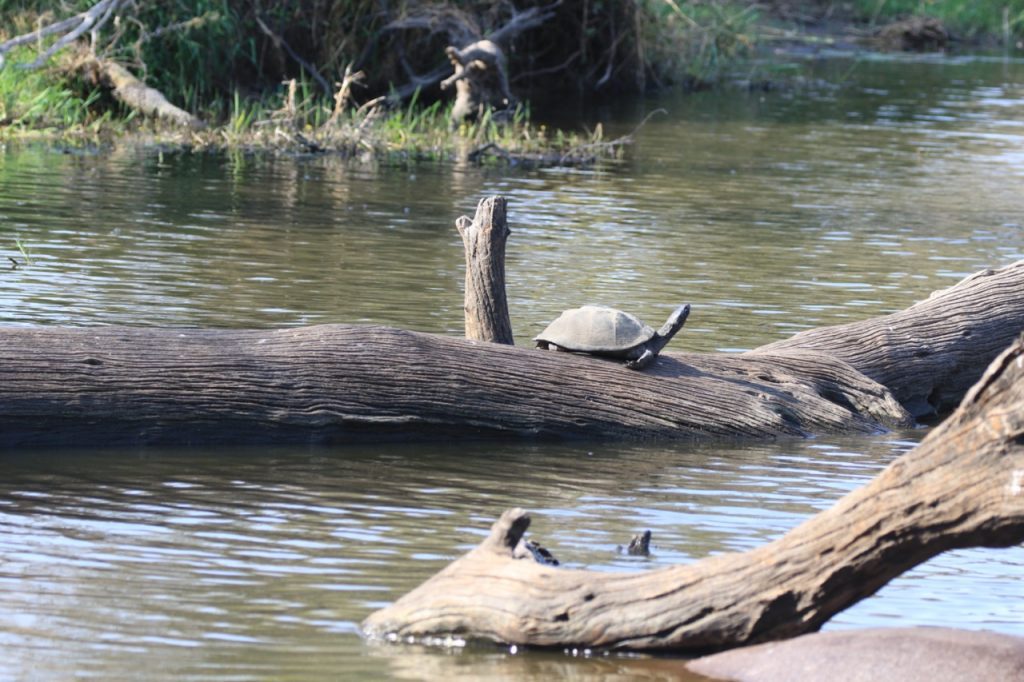
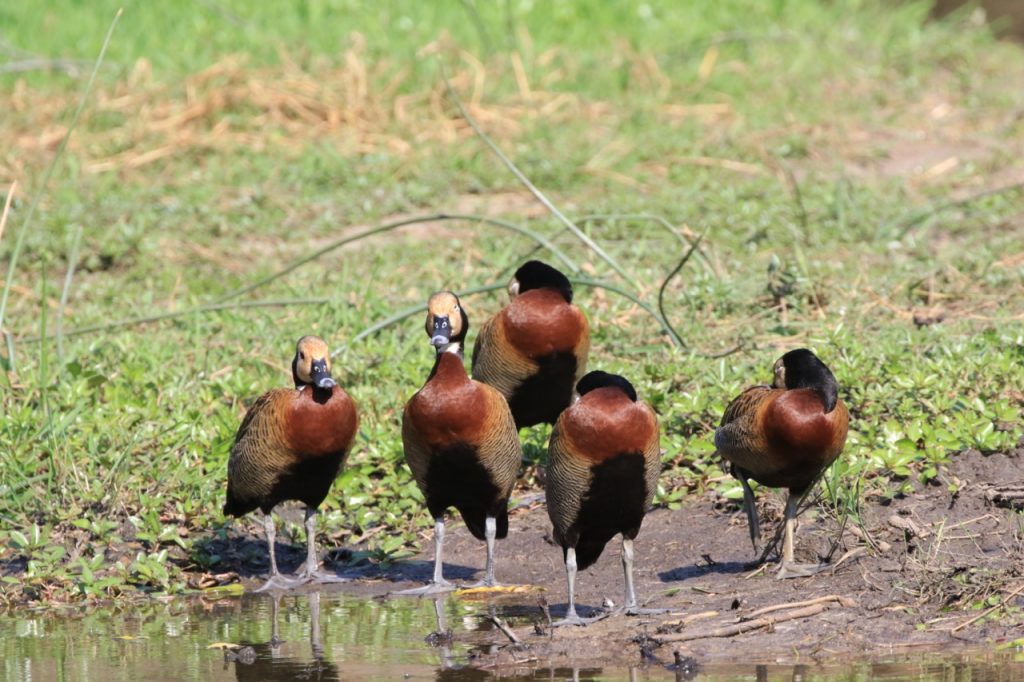
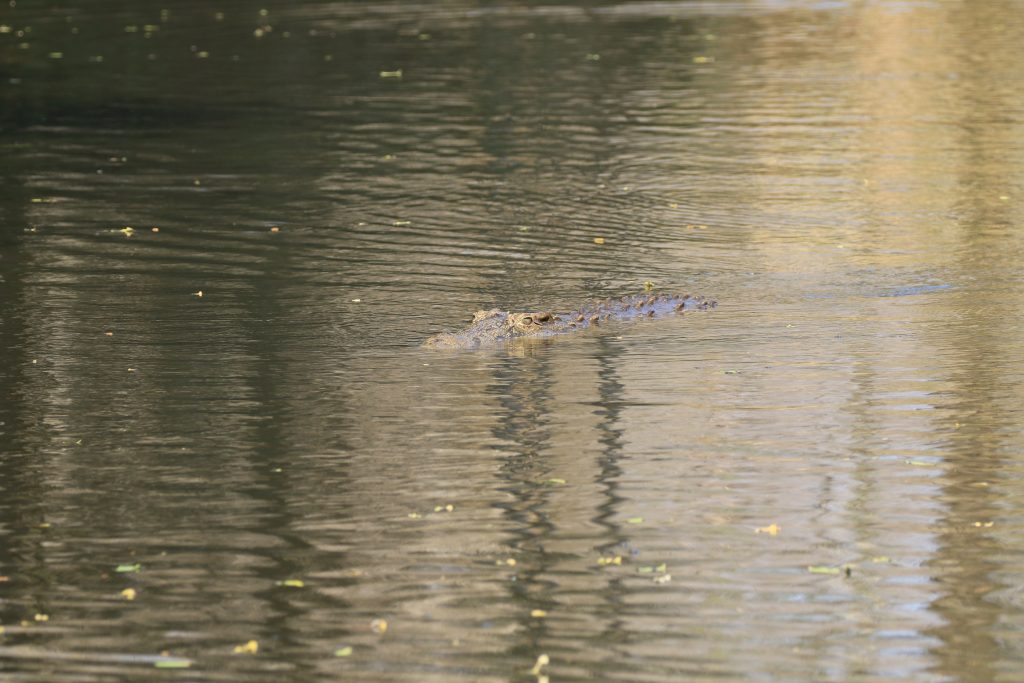
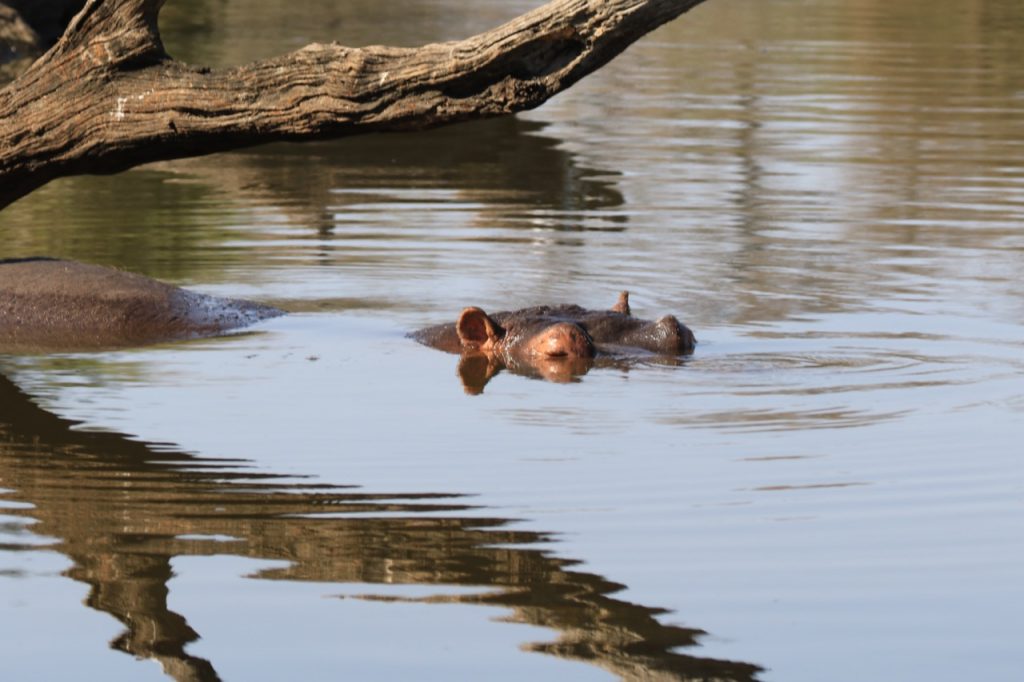
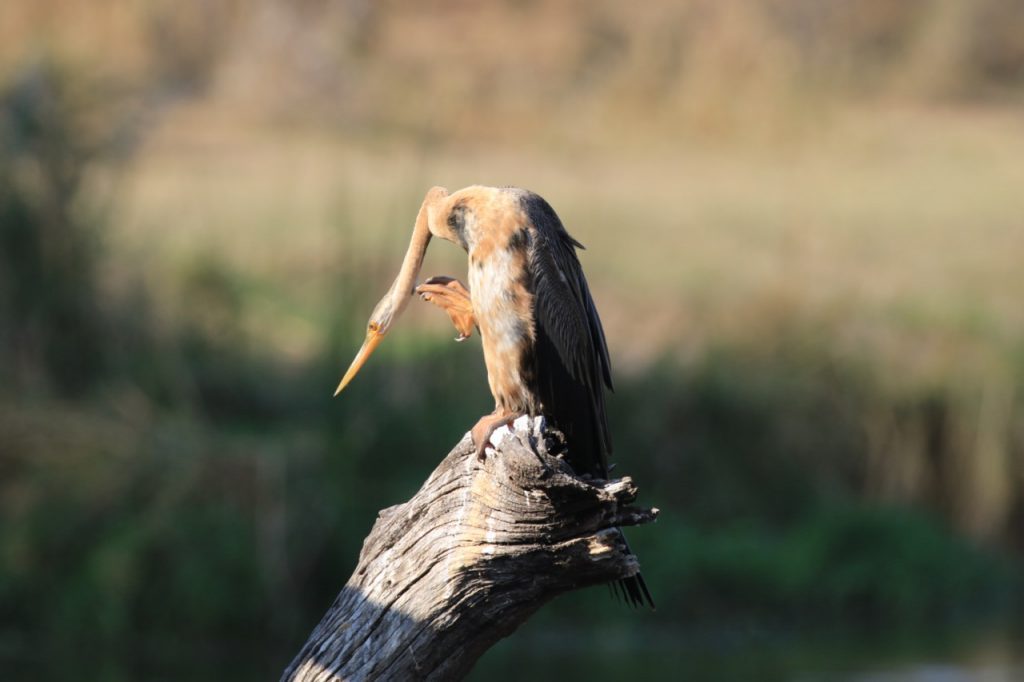
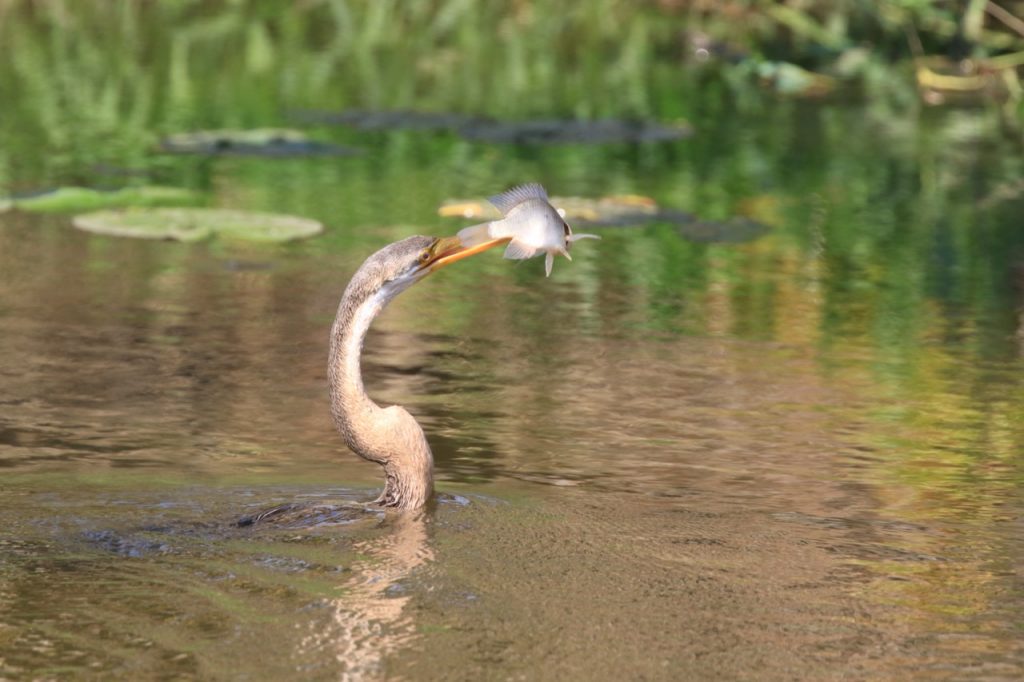
We watched a Striated Heron dispose of a dead chick to ensure that the remaining offspring had a good chance of survival.
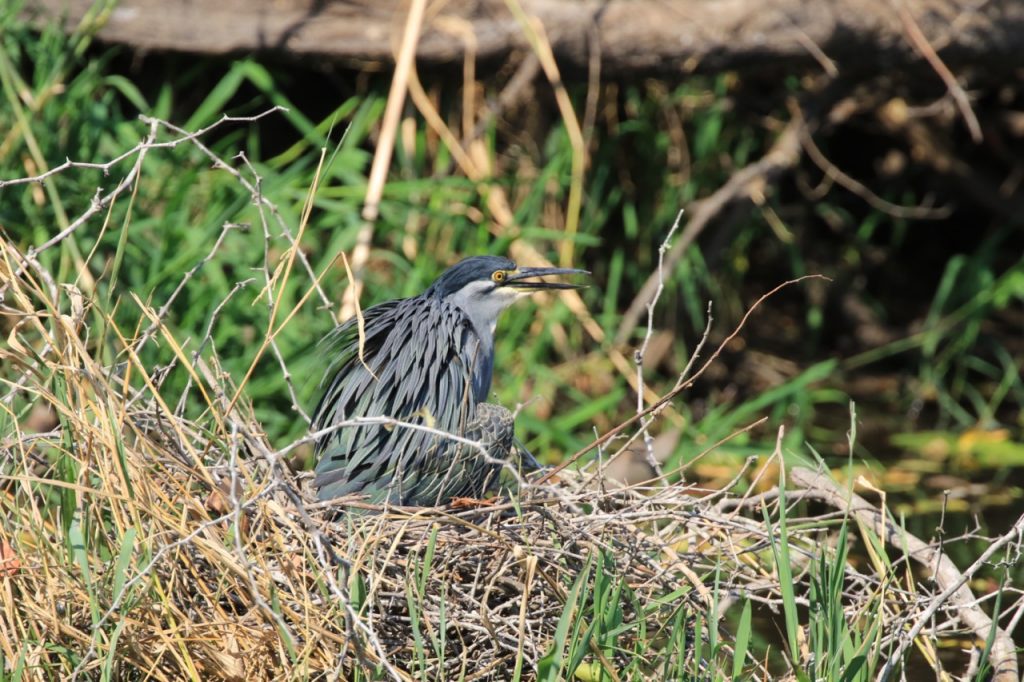
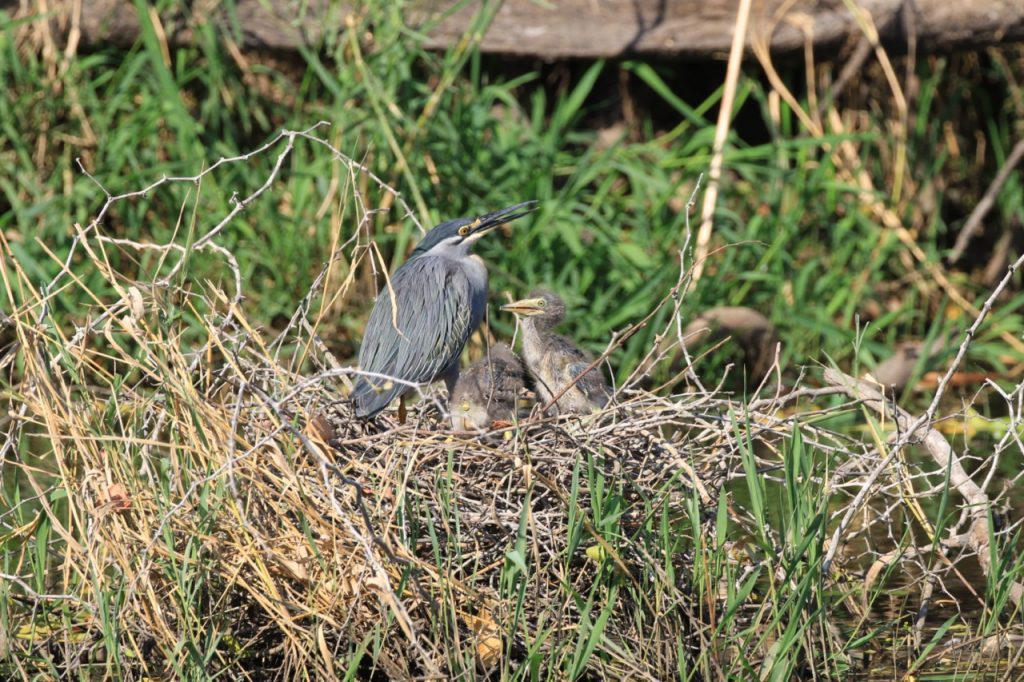
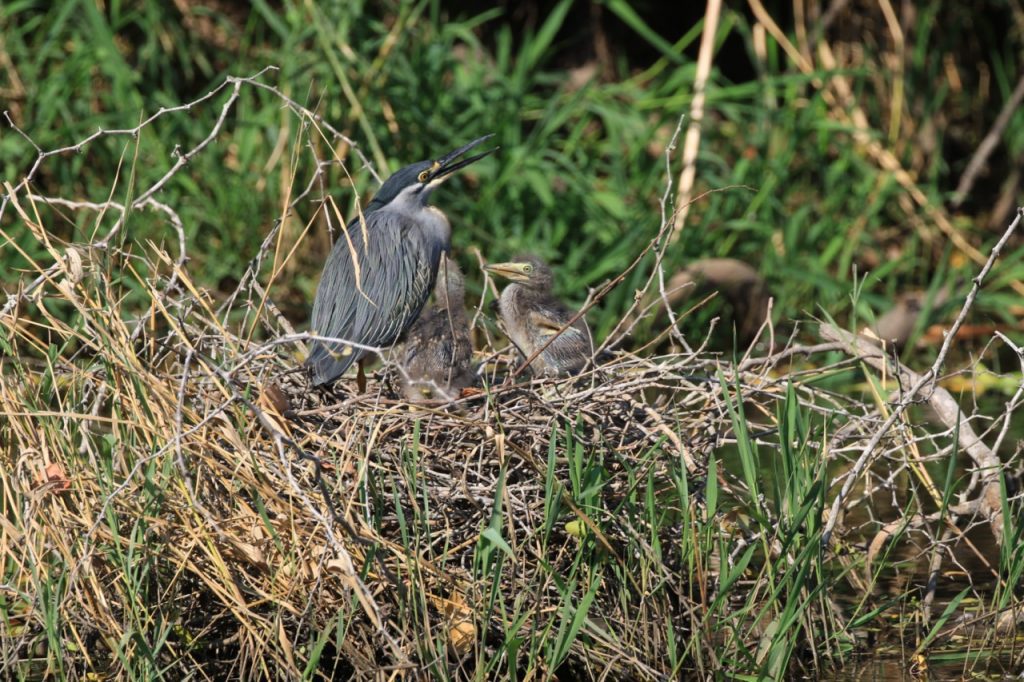
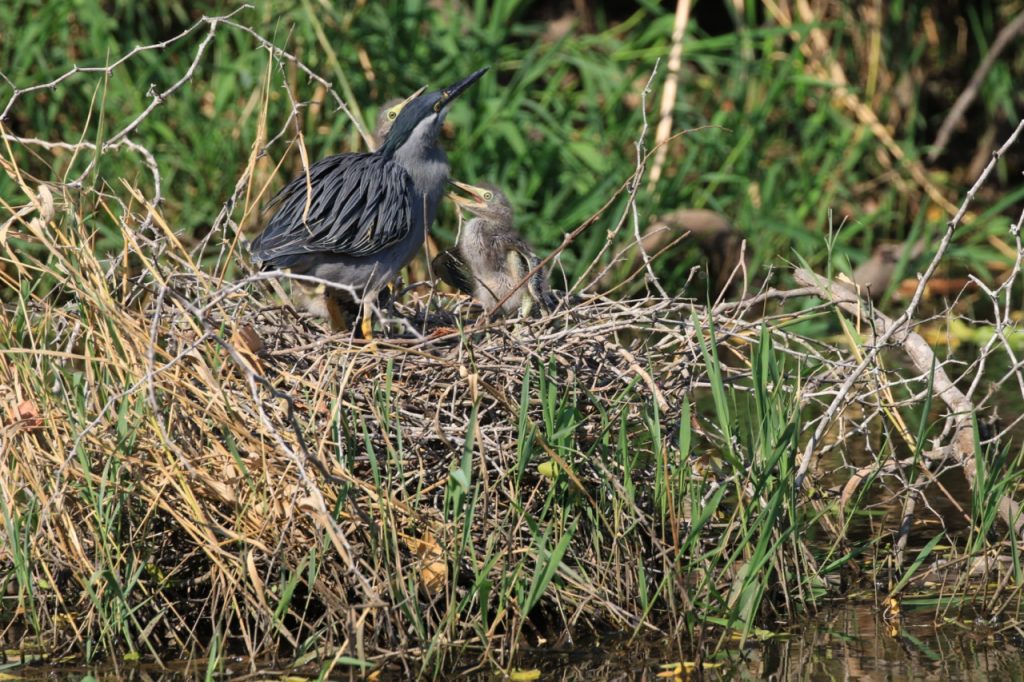
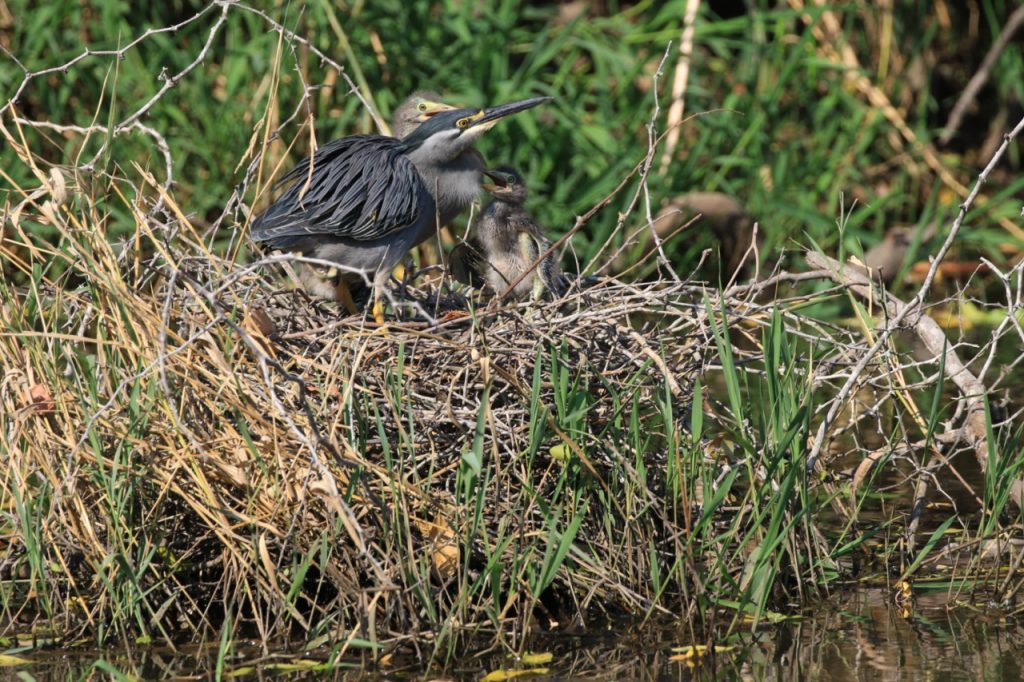
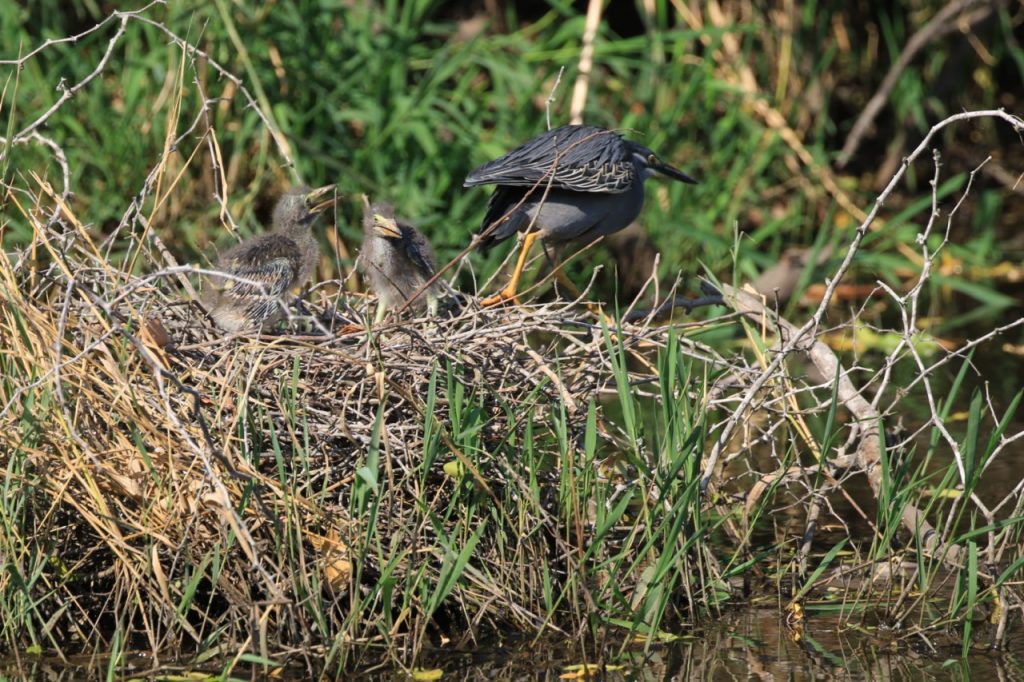
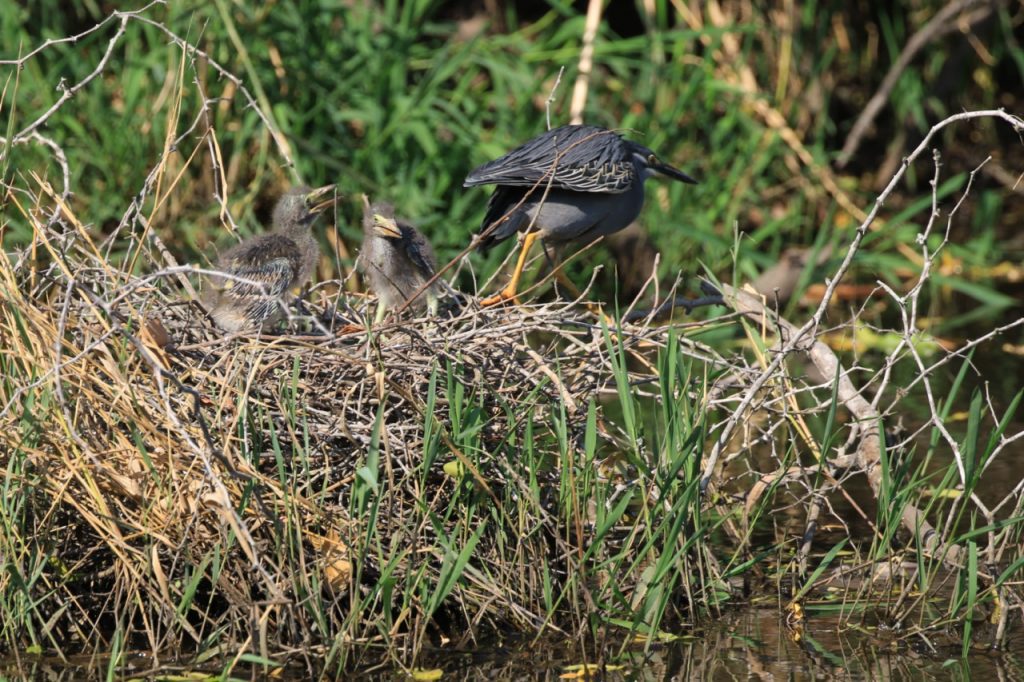
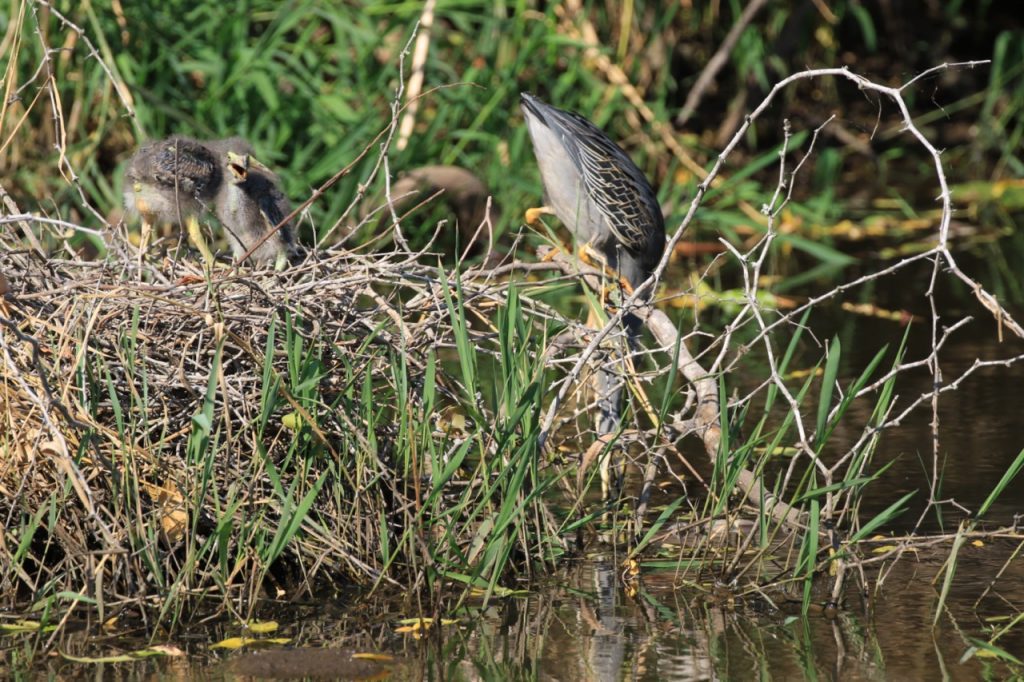
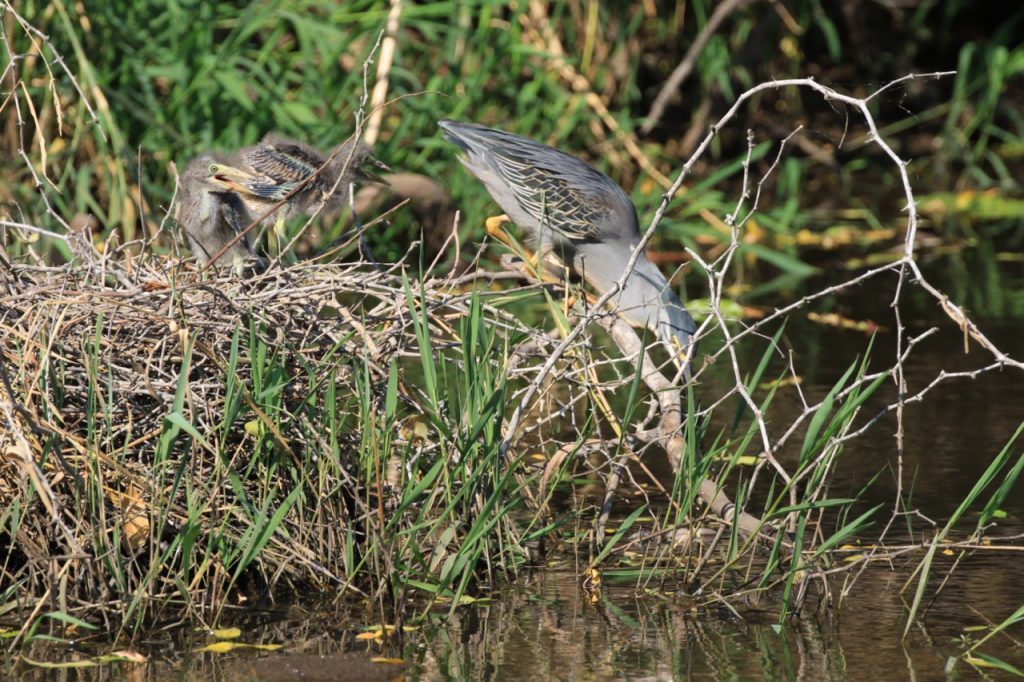
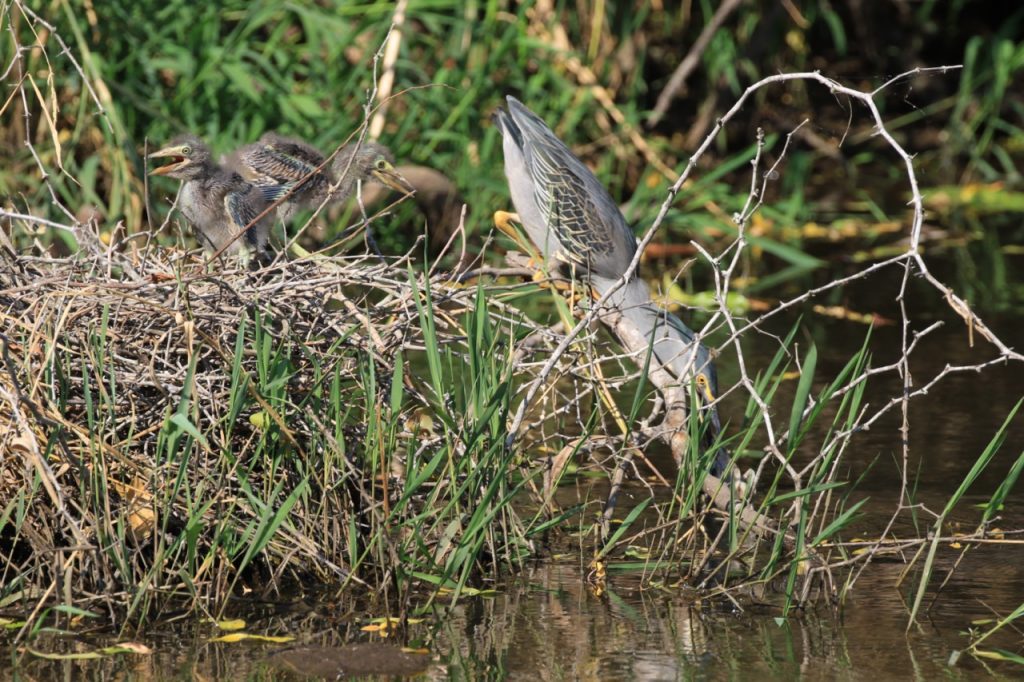
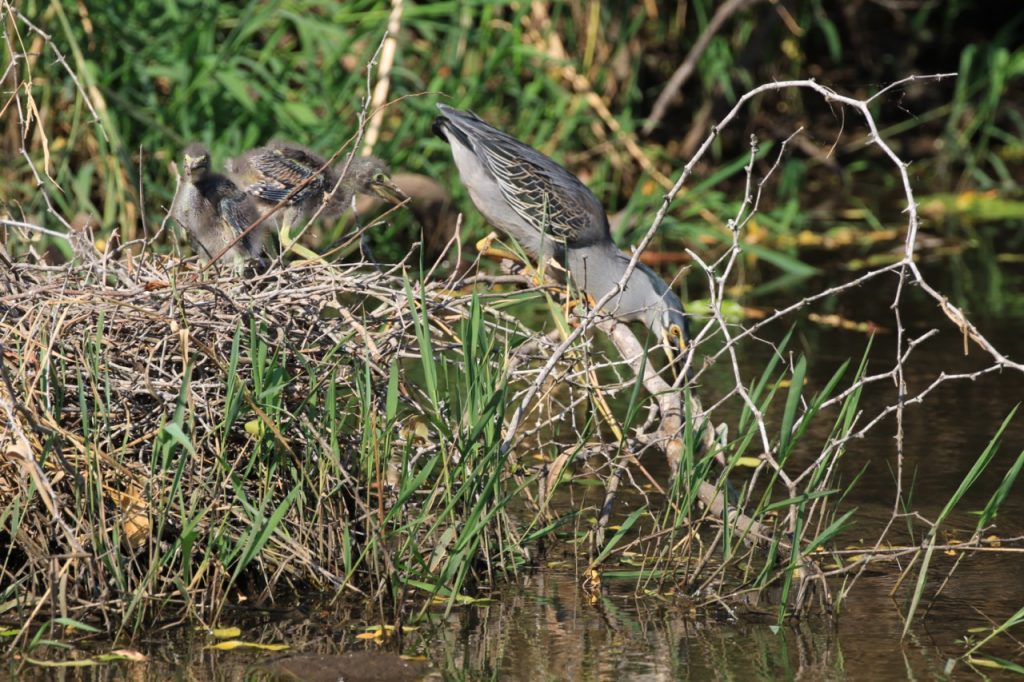
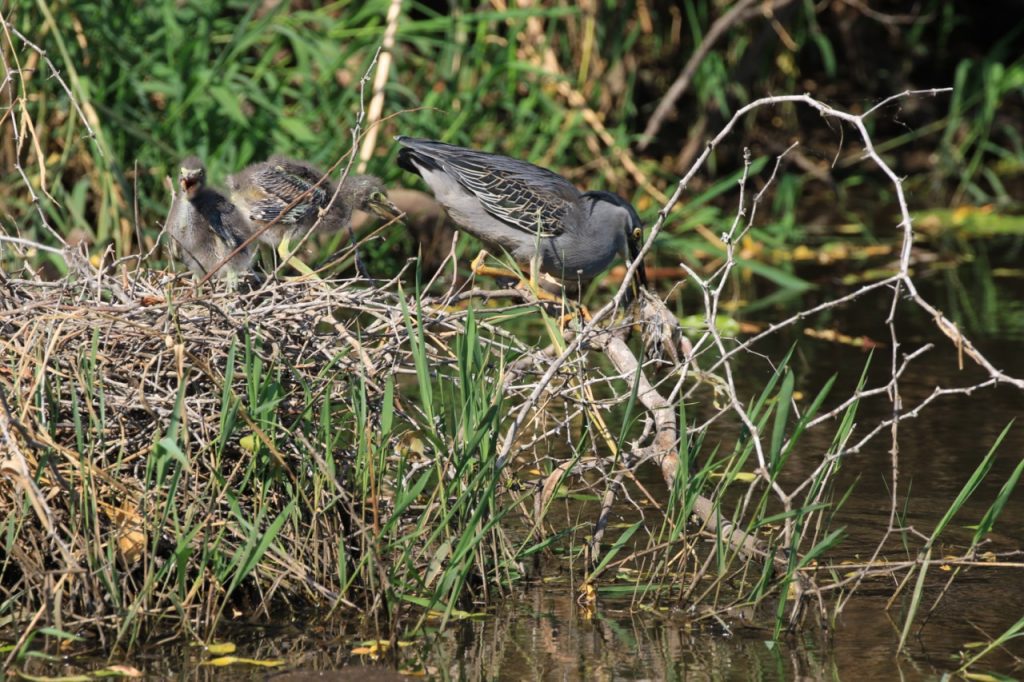
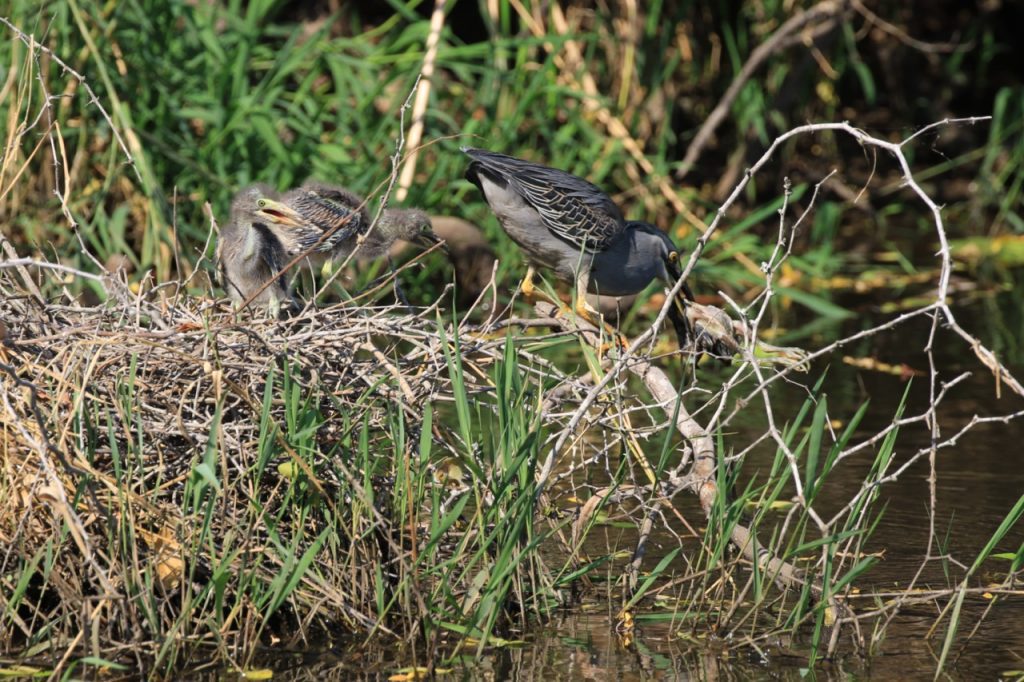
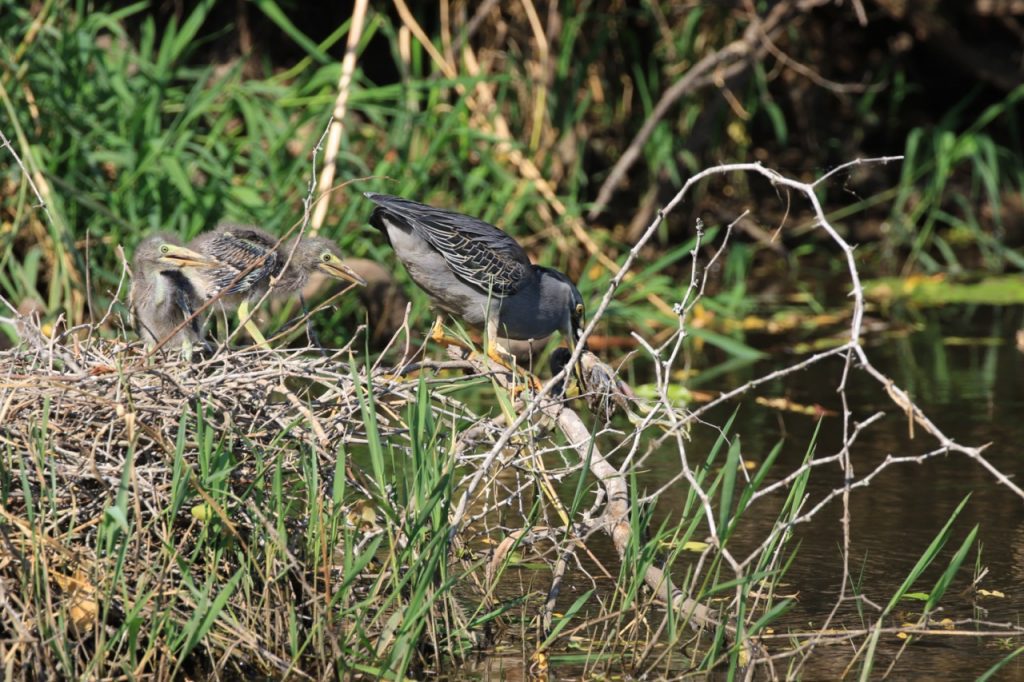
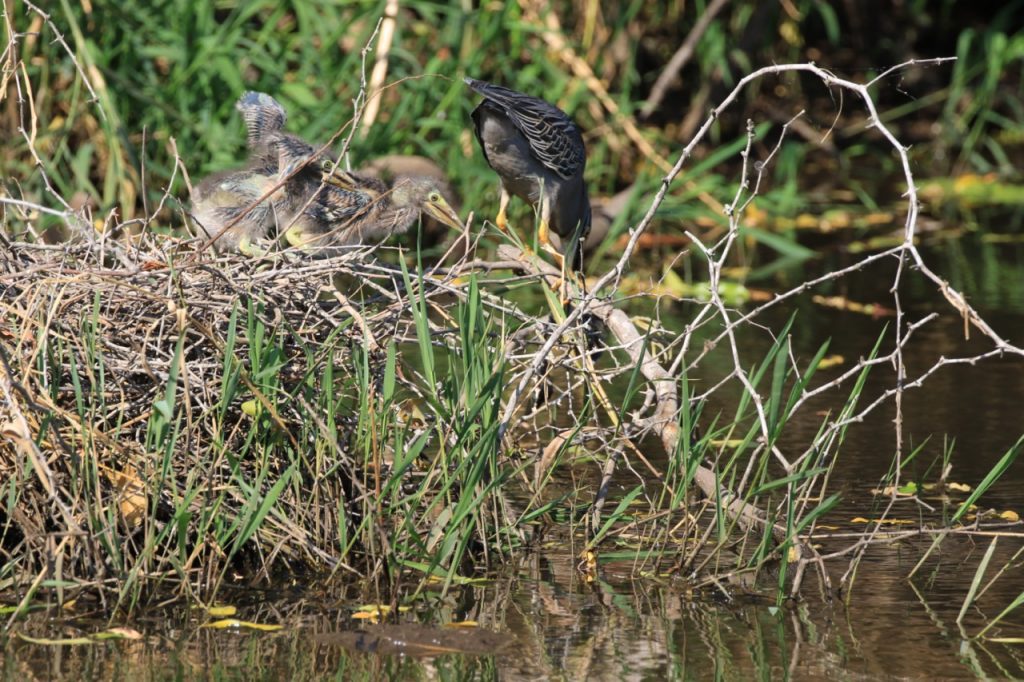
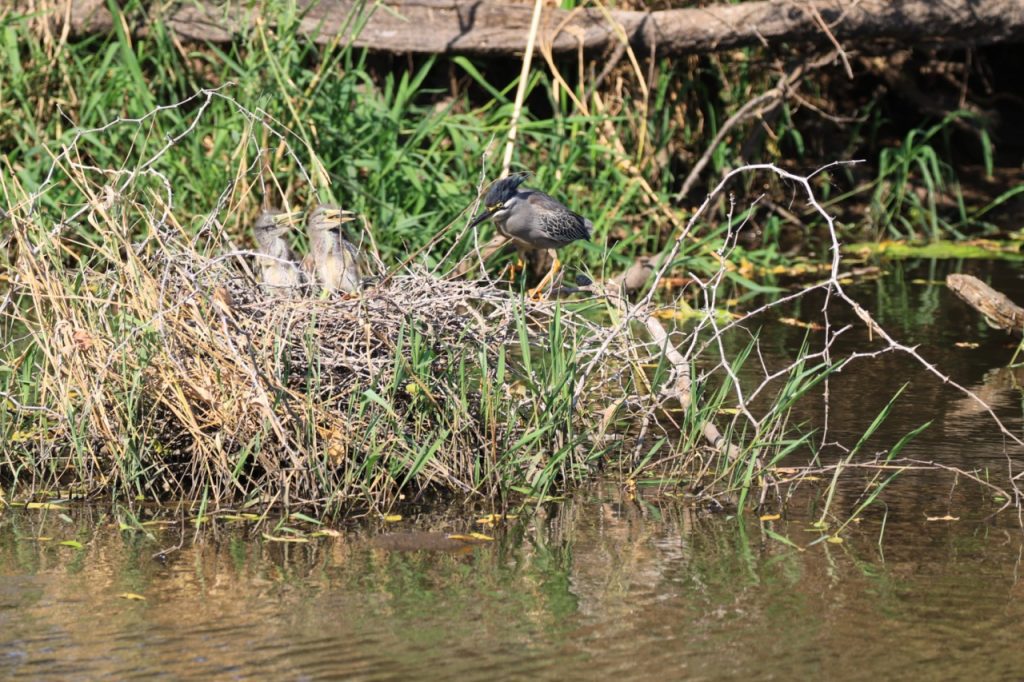
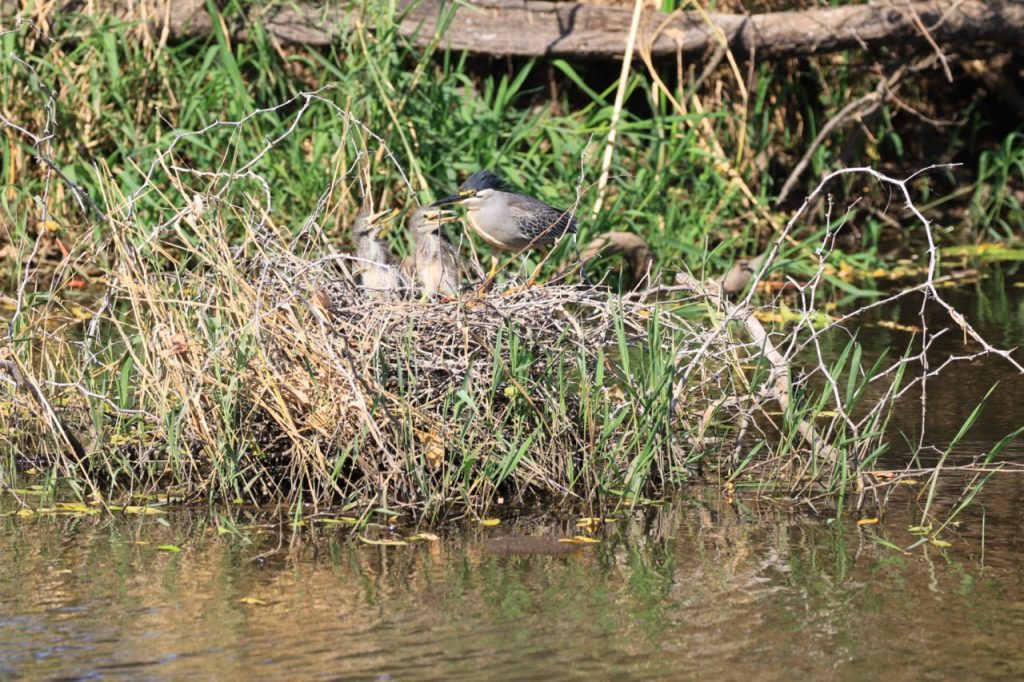
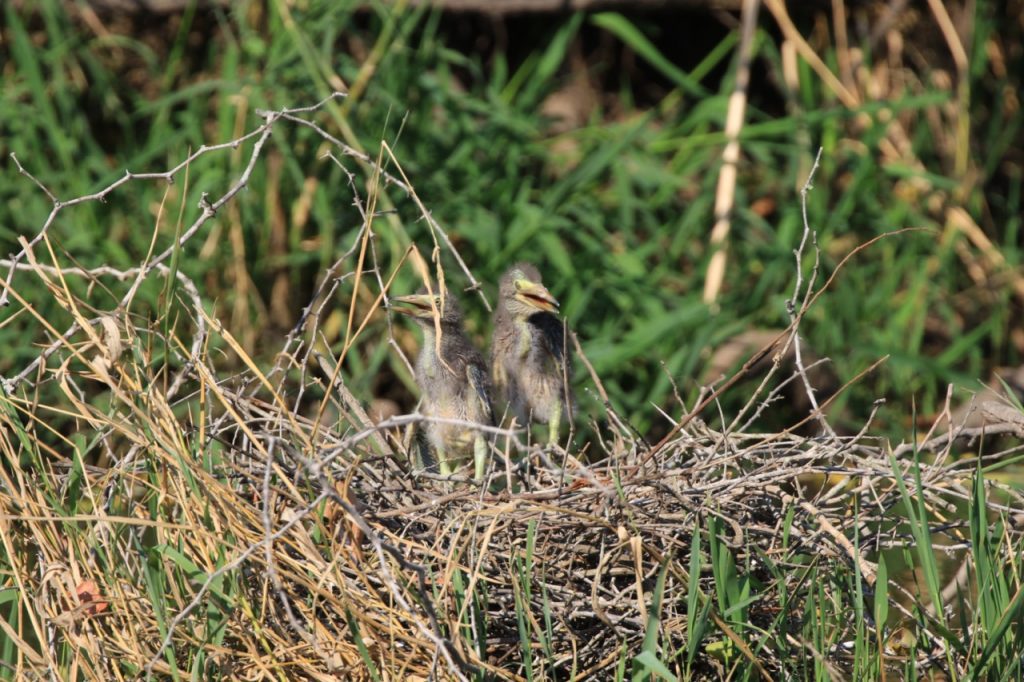
Go to: Kruger National Park

